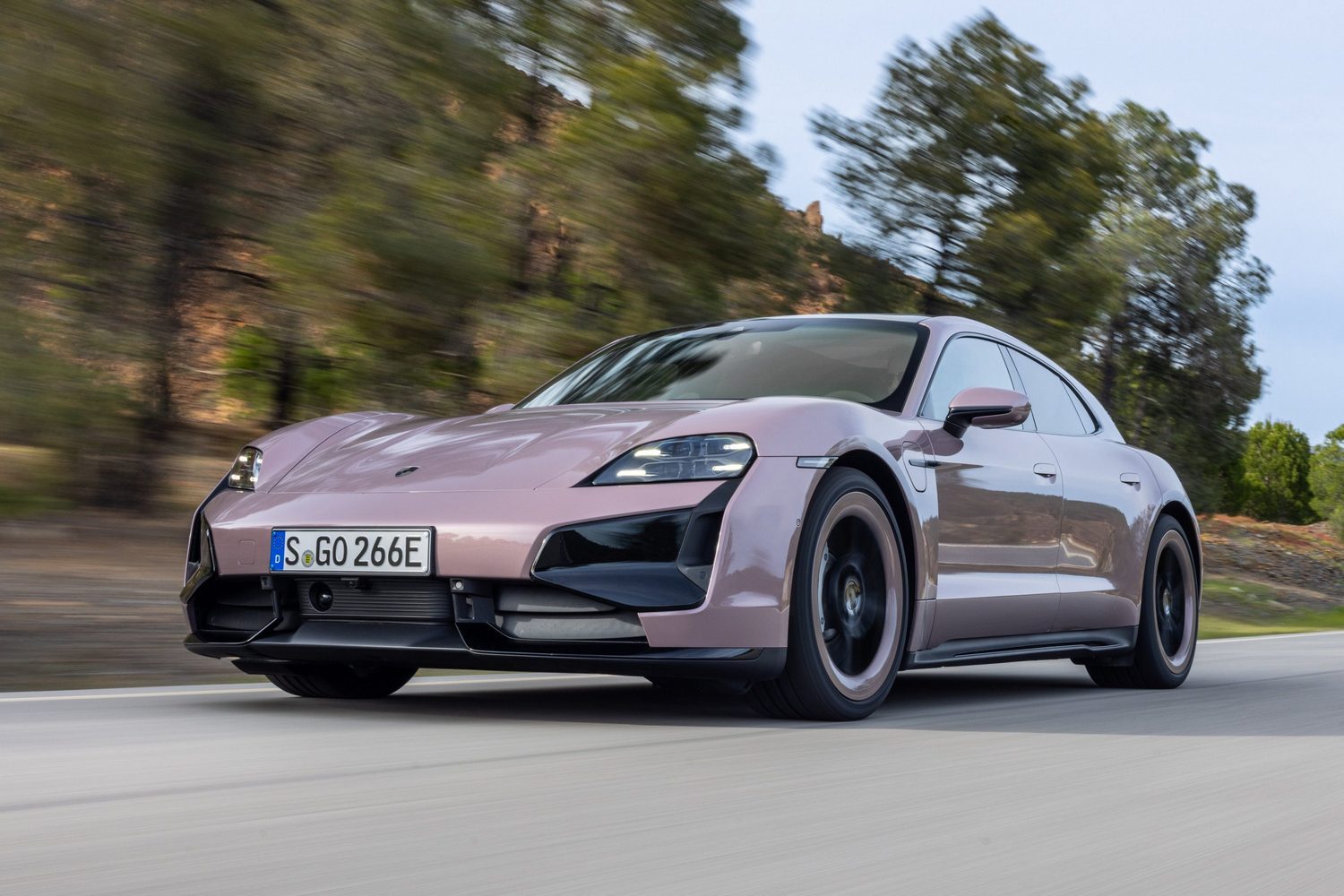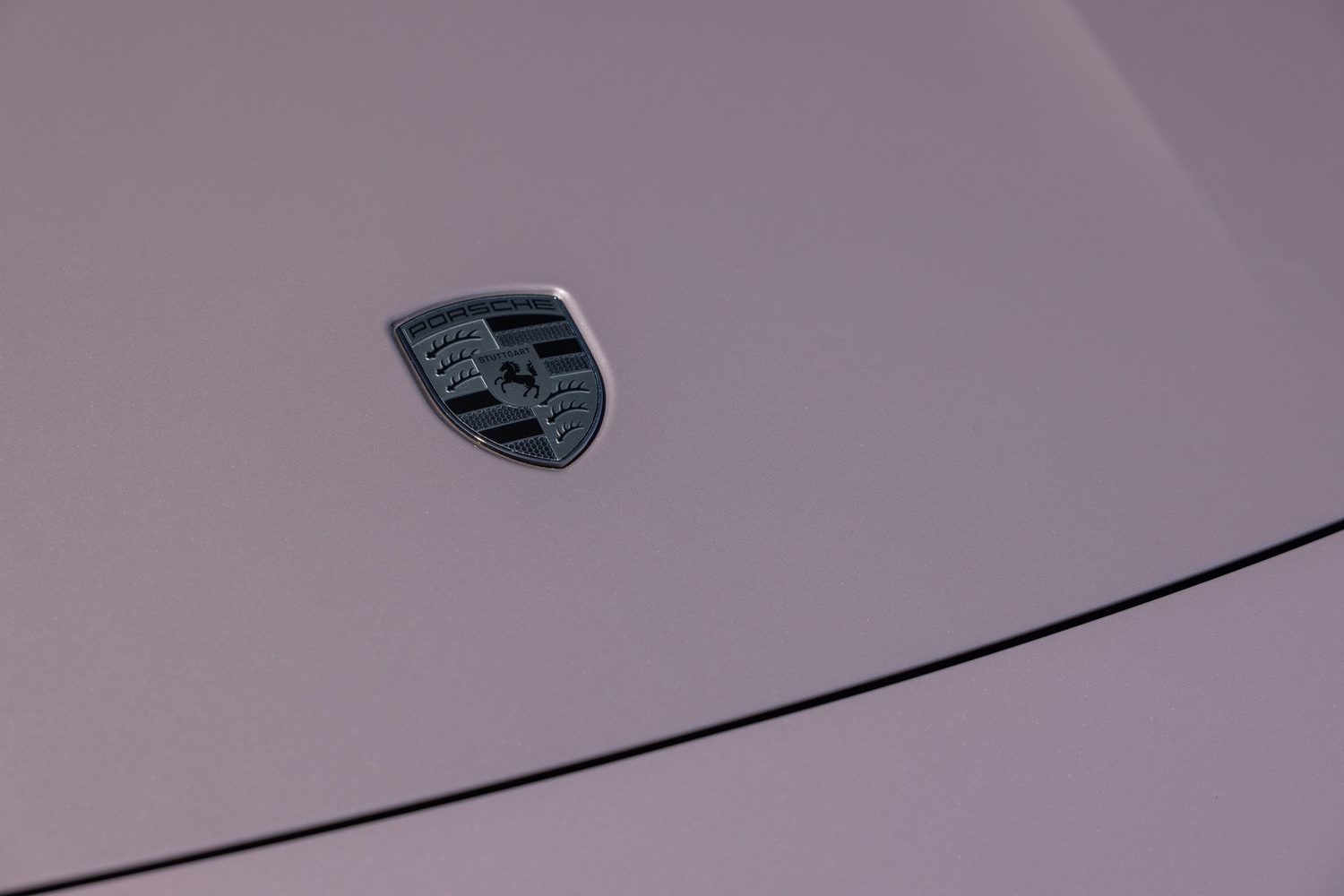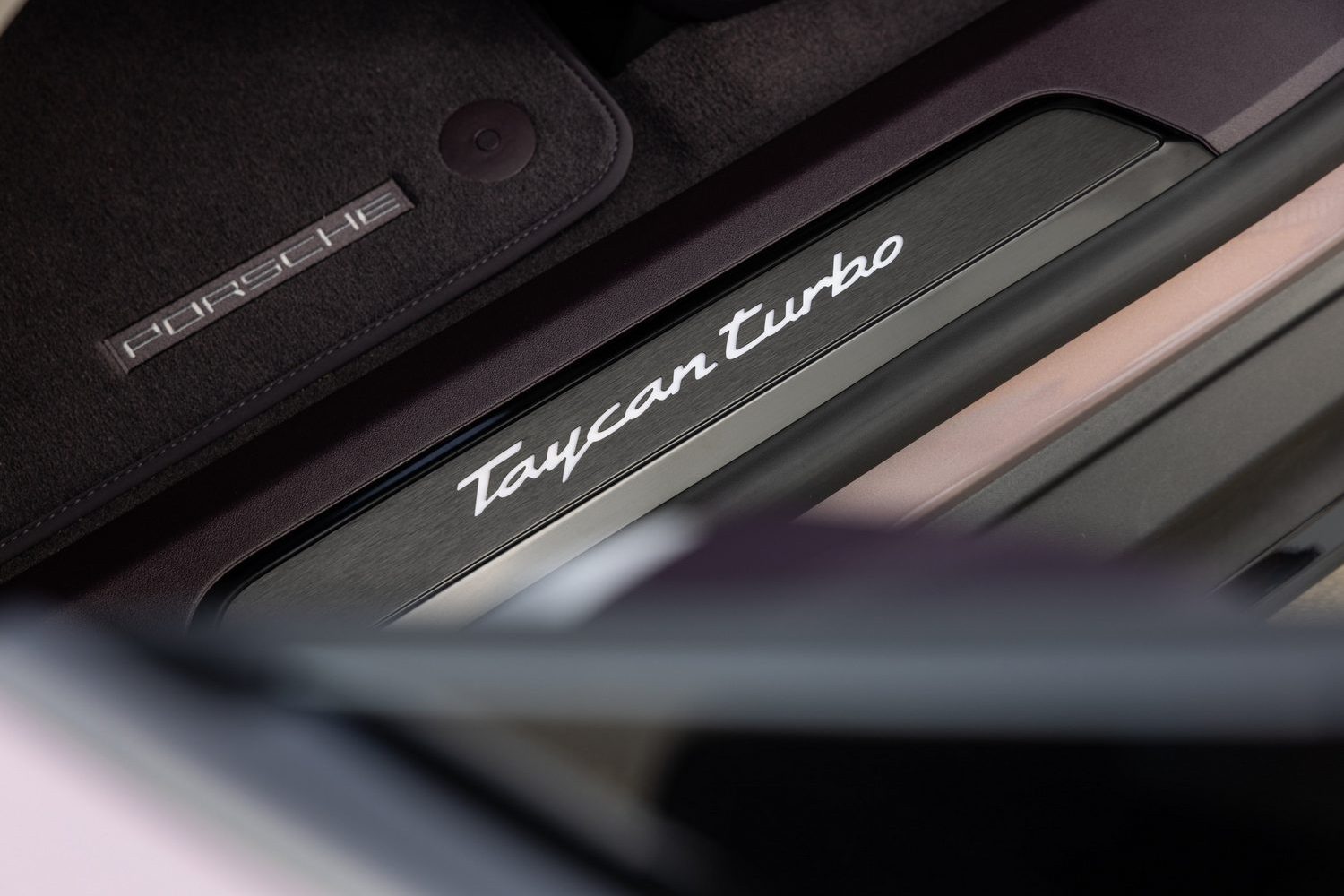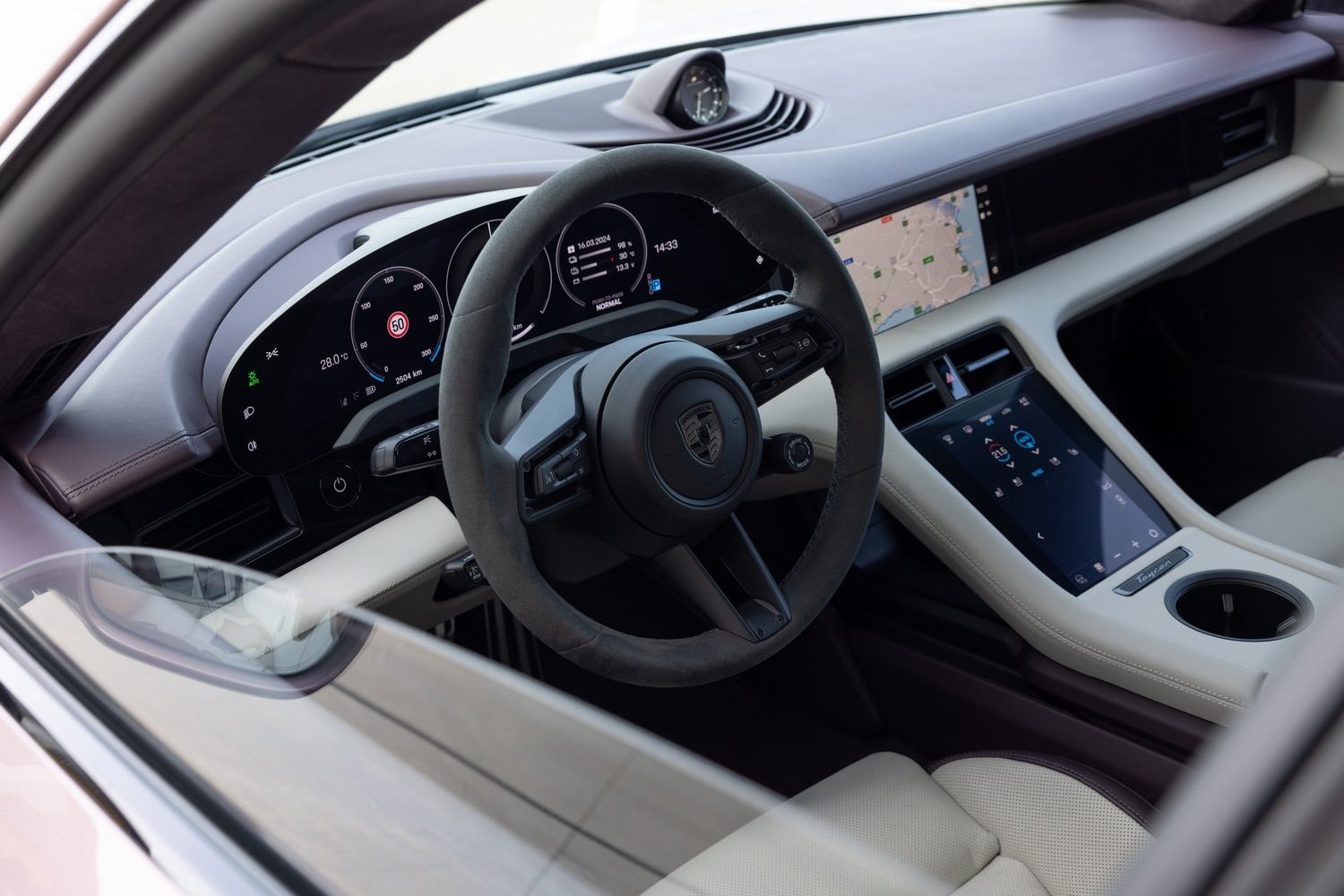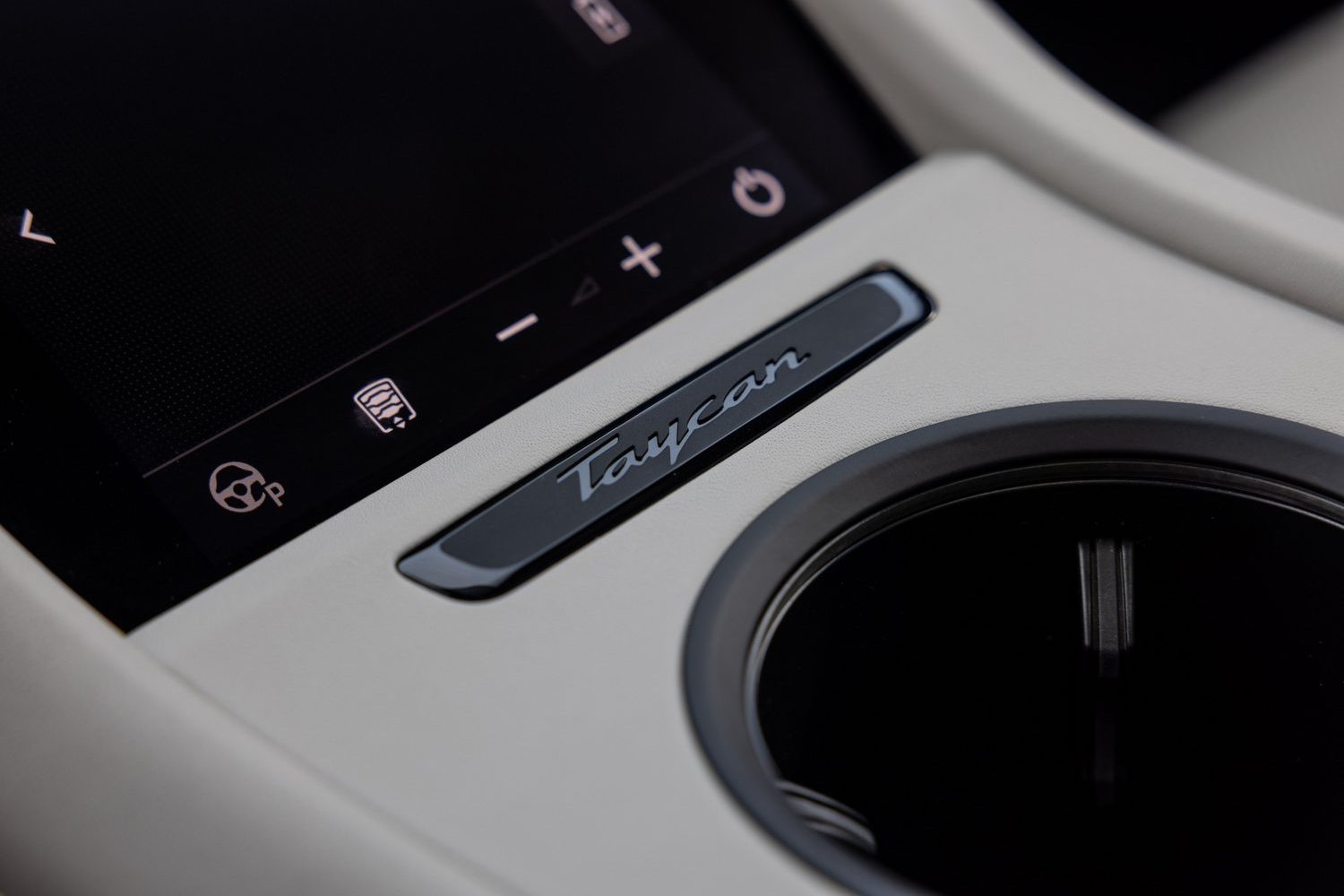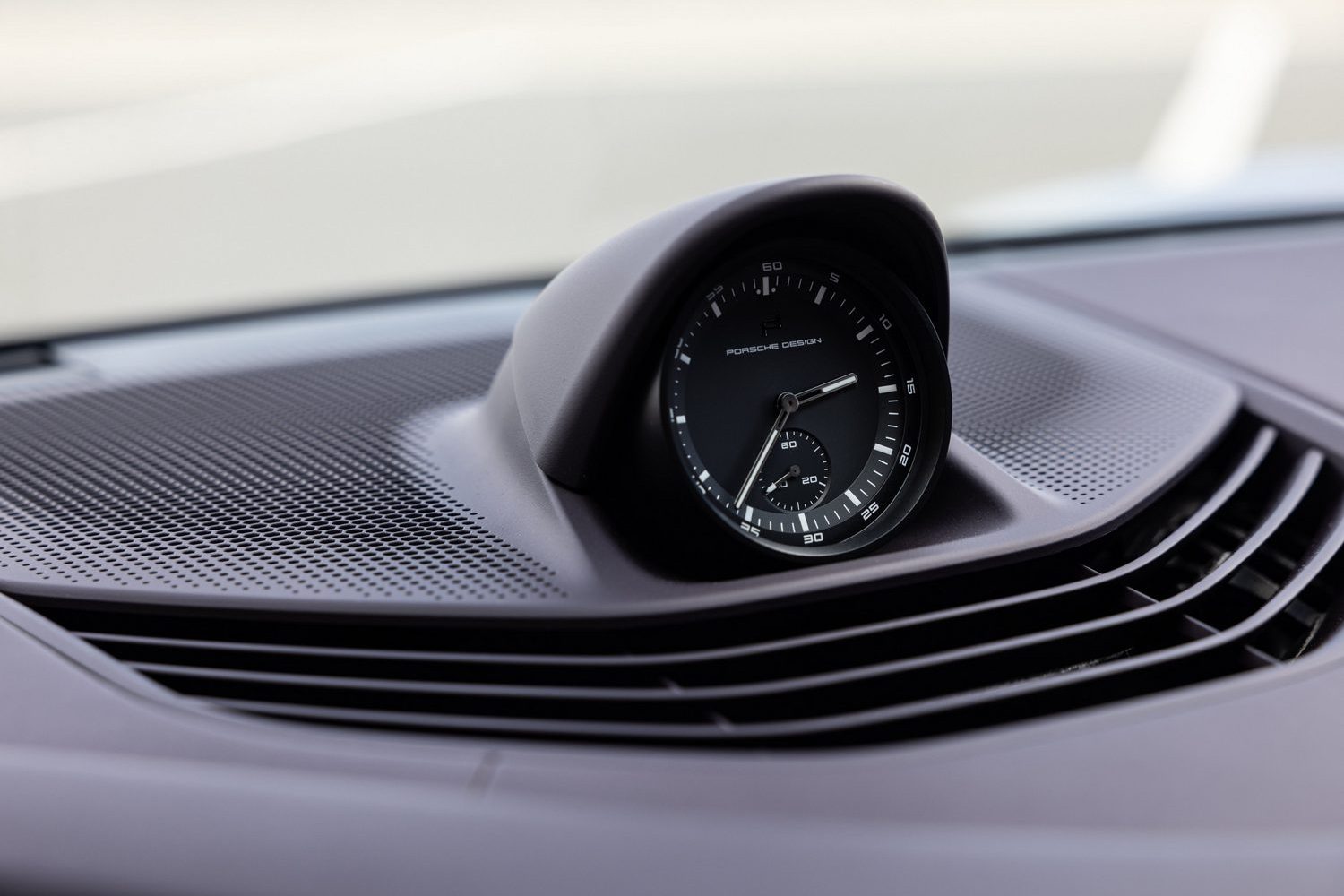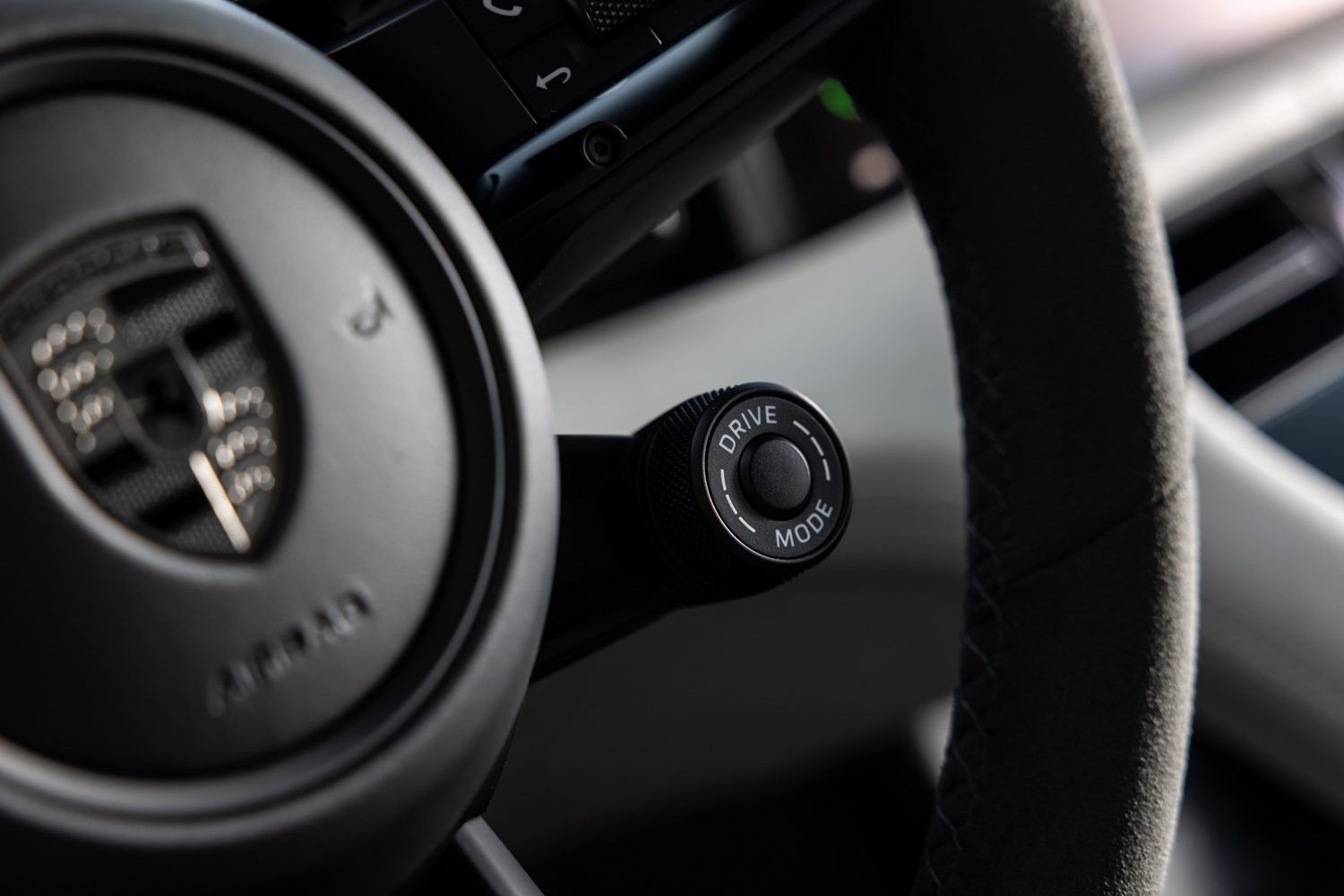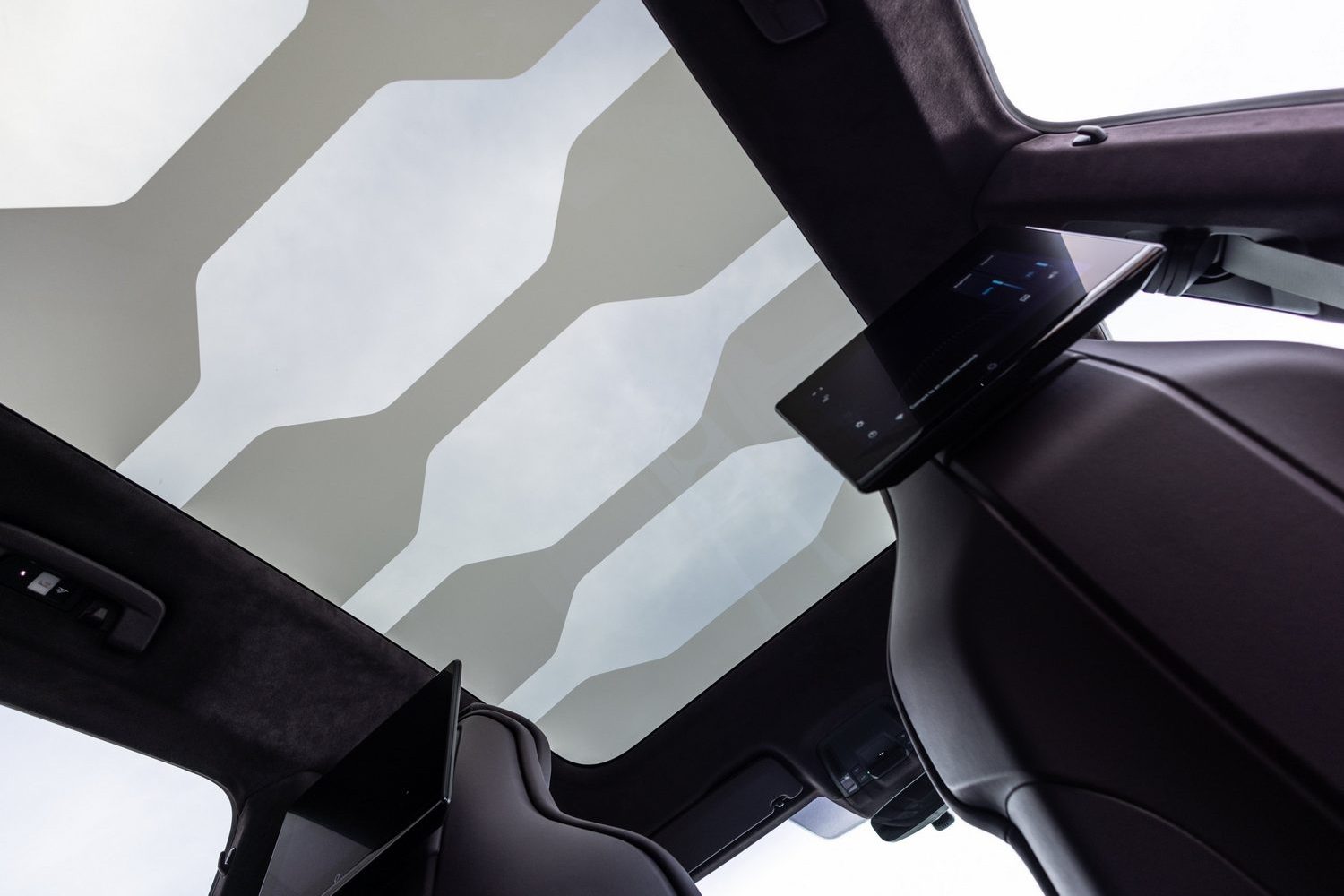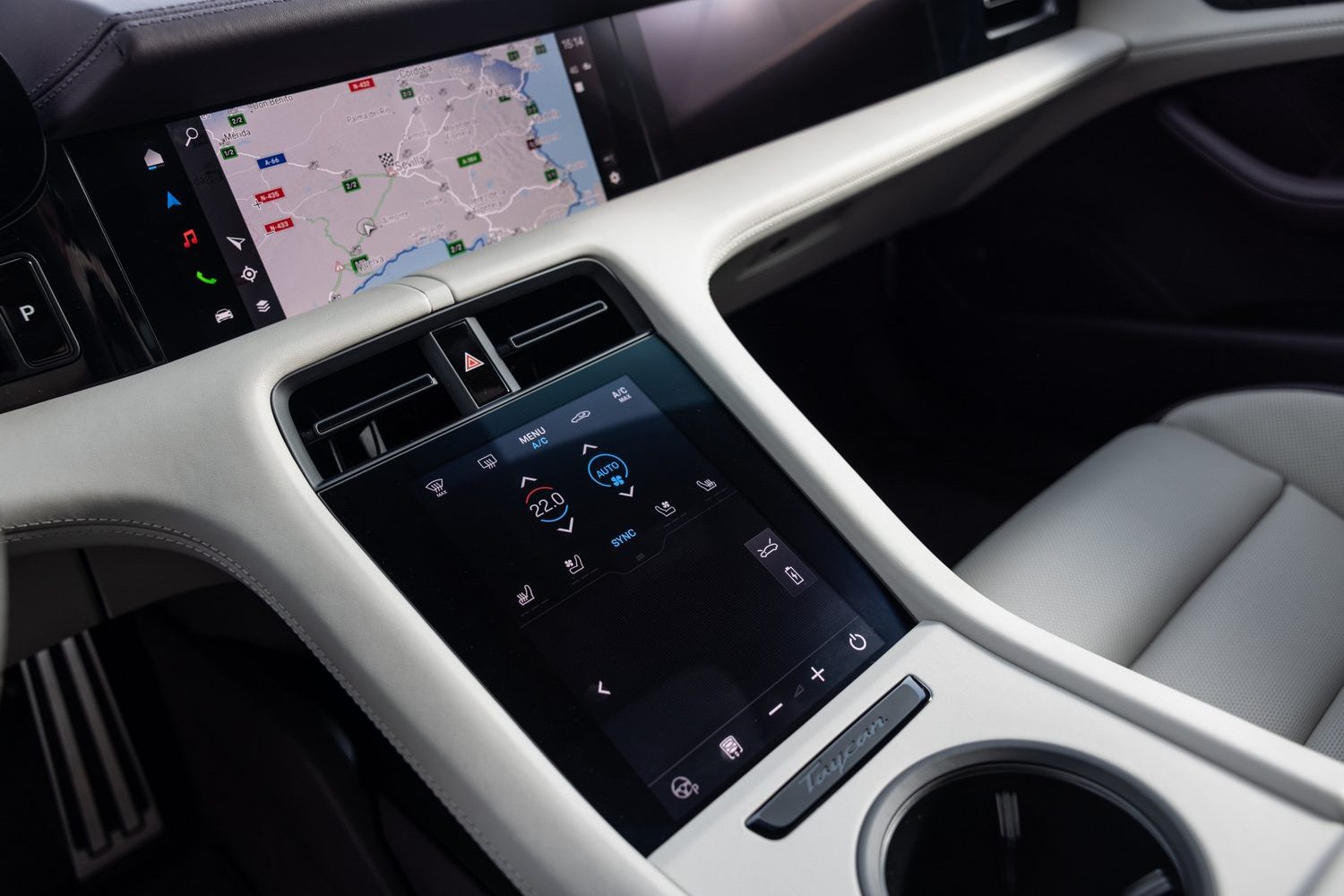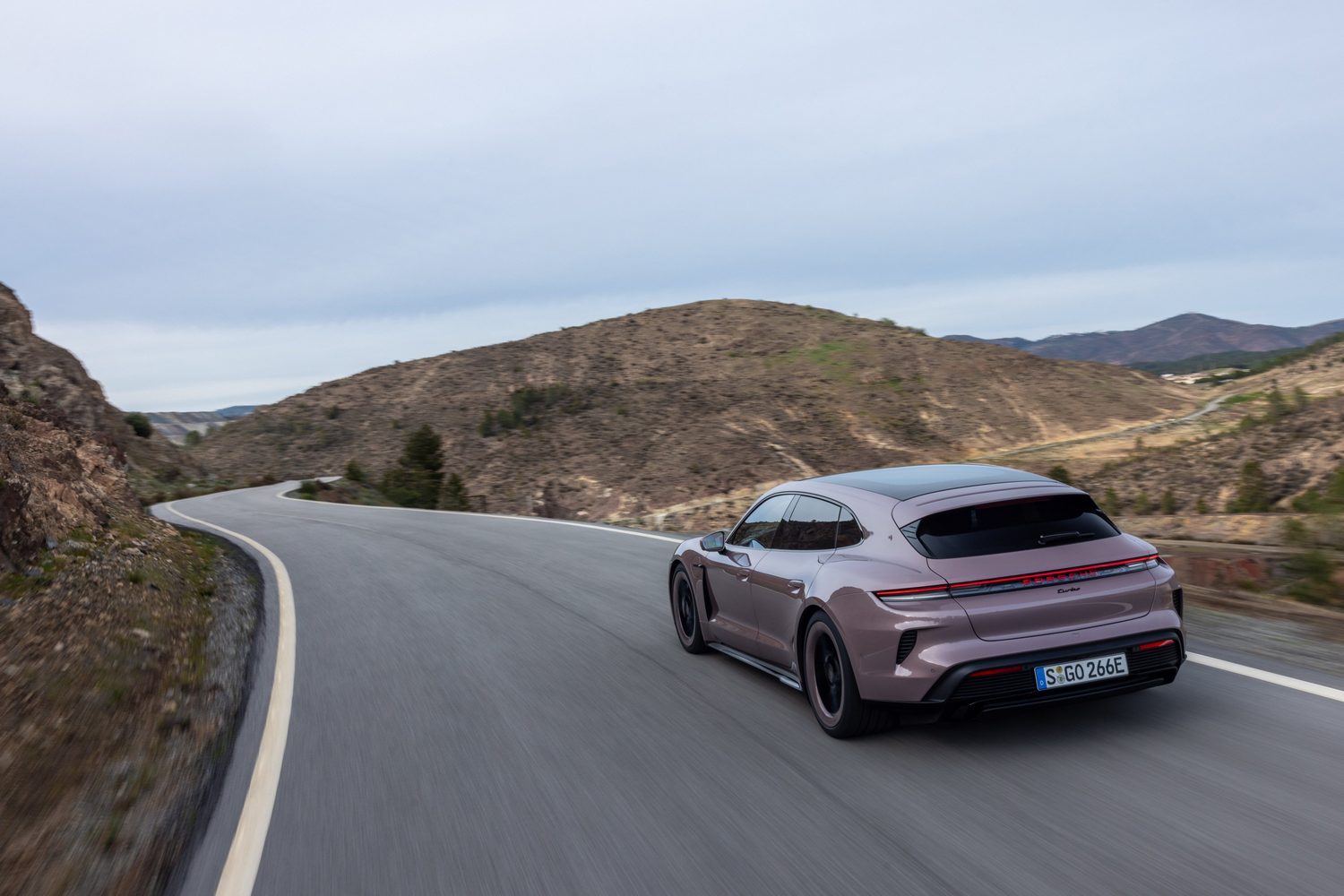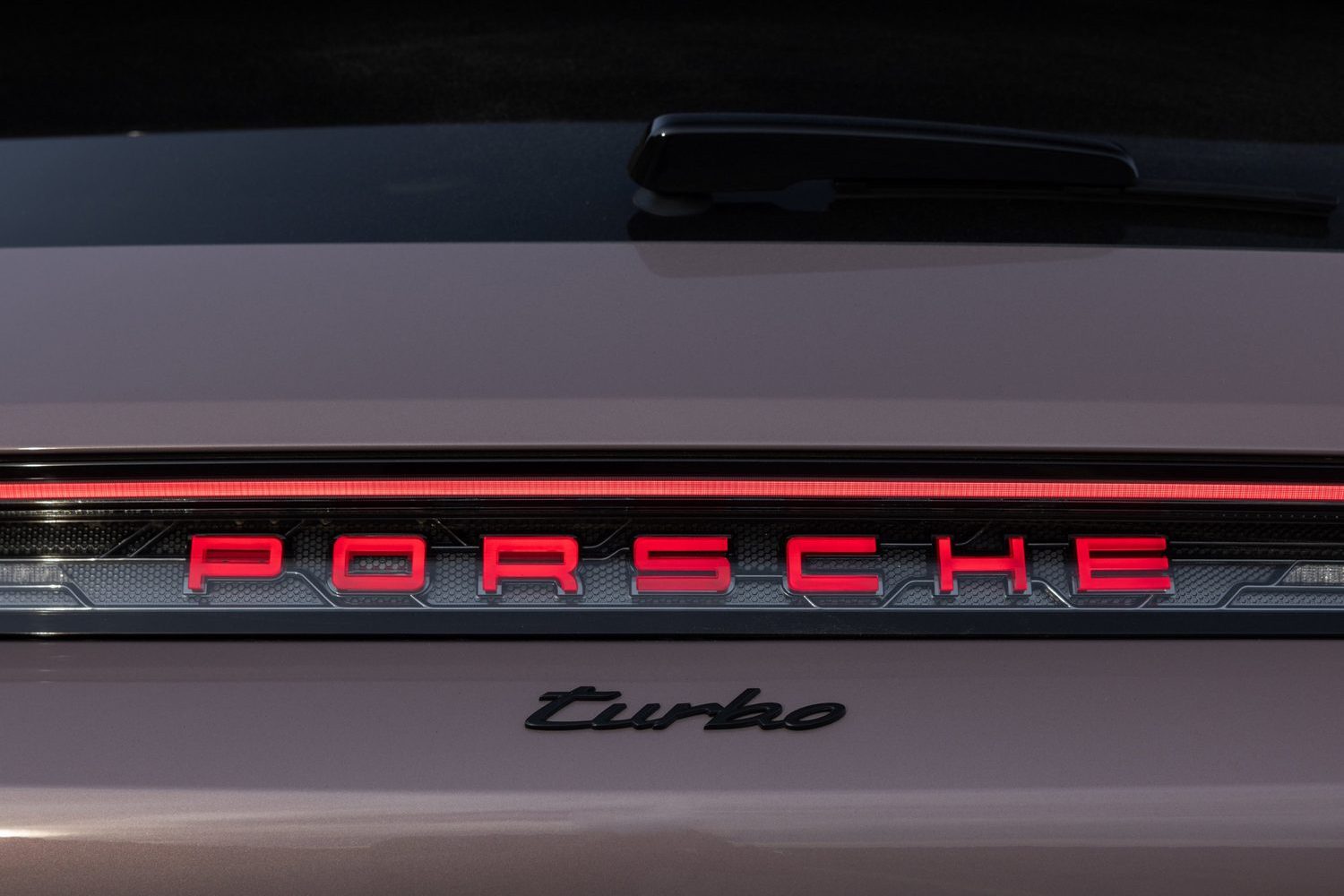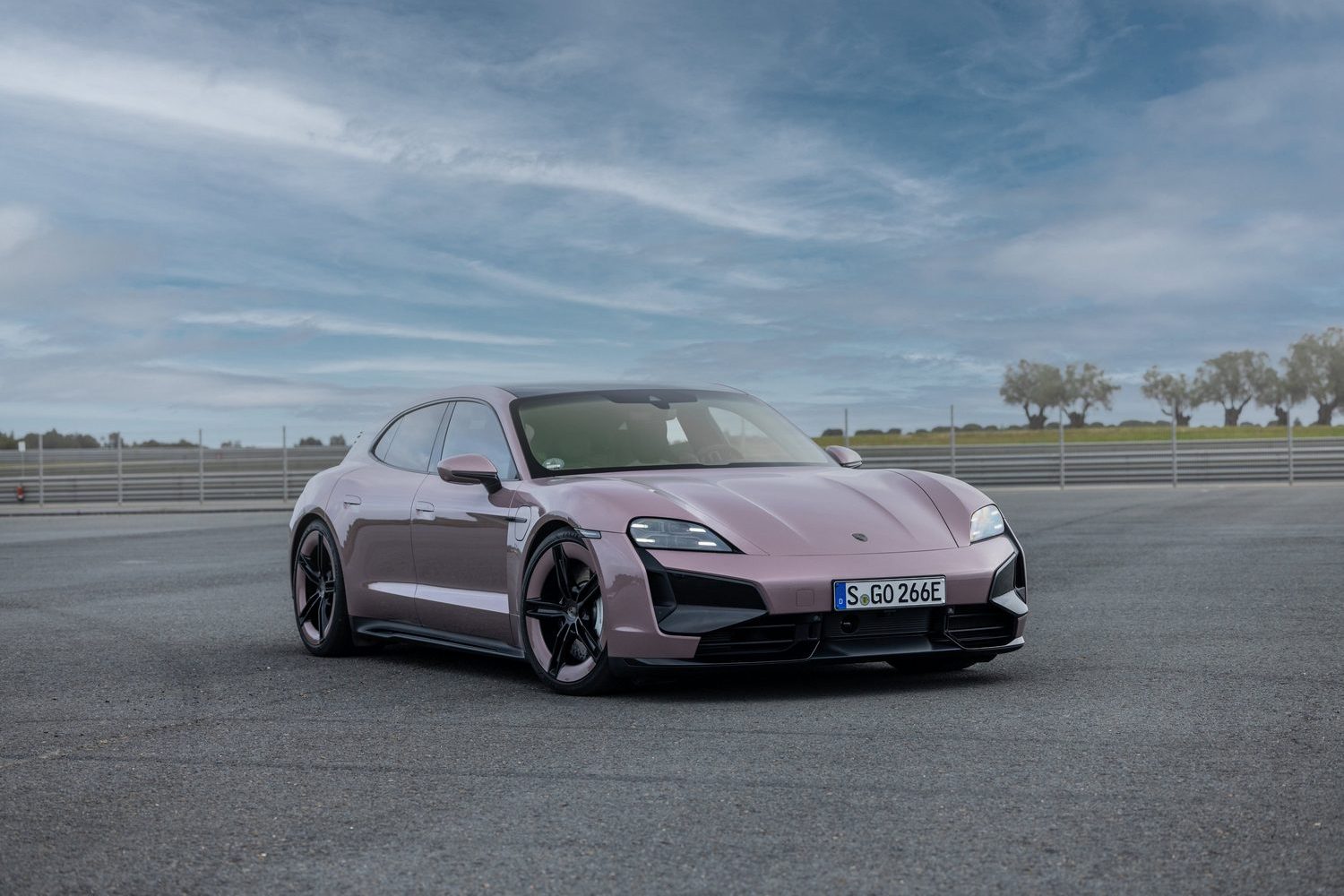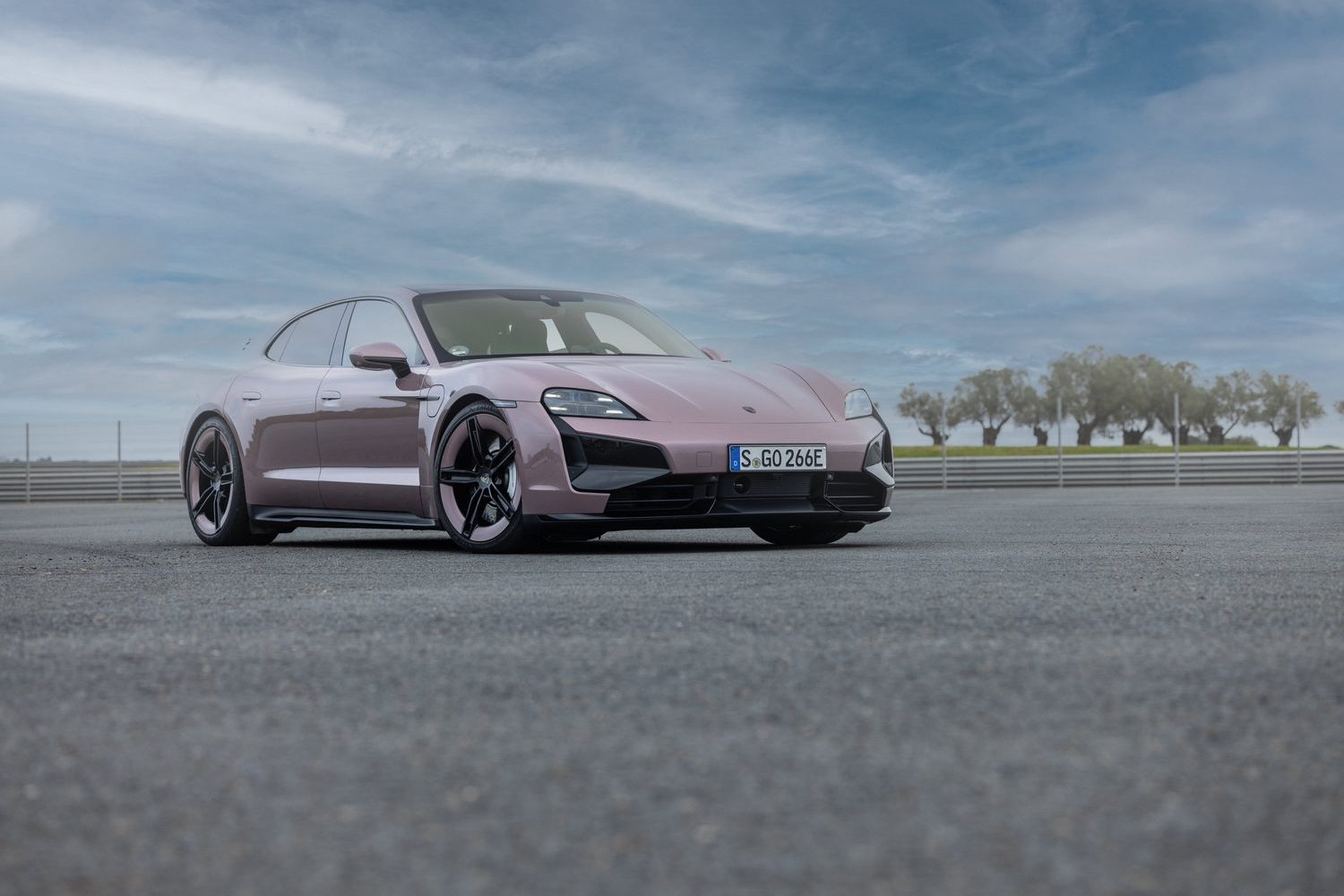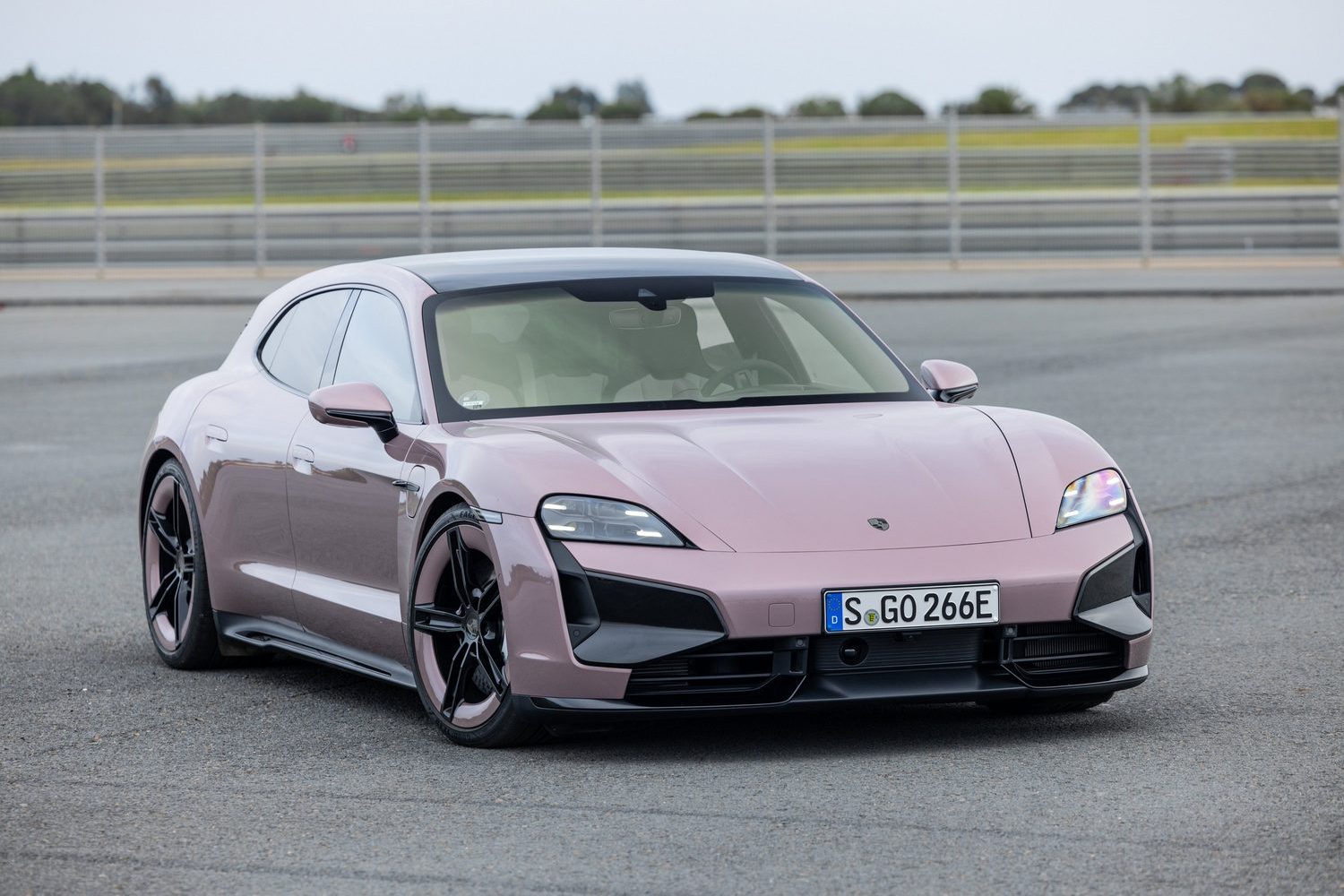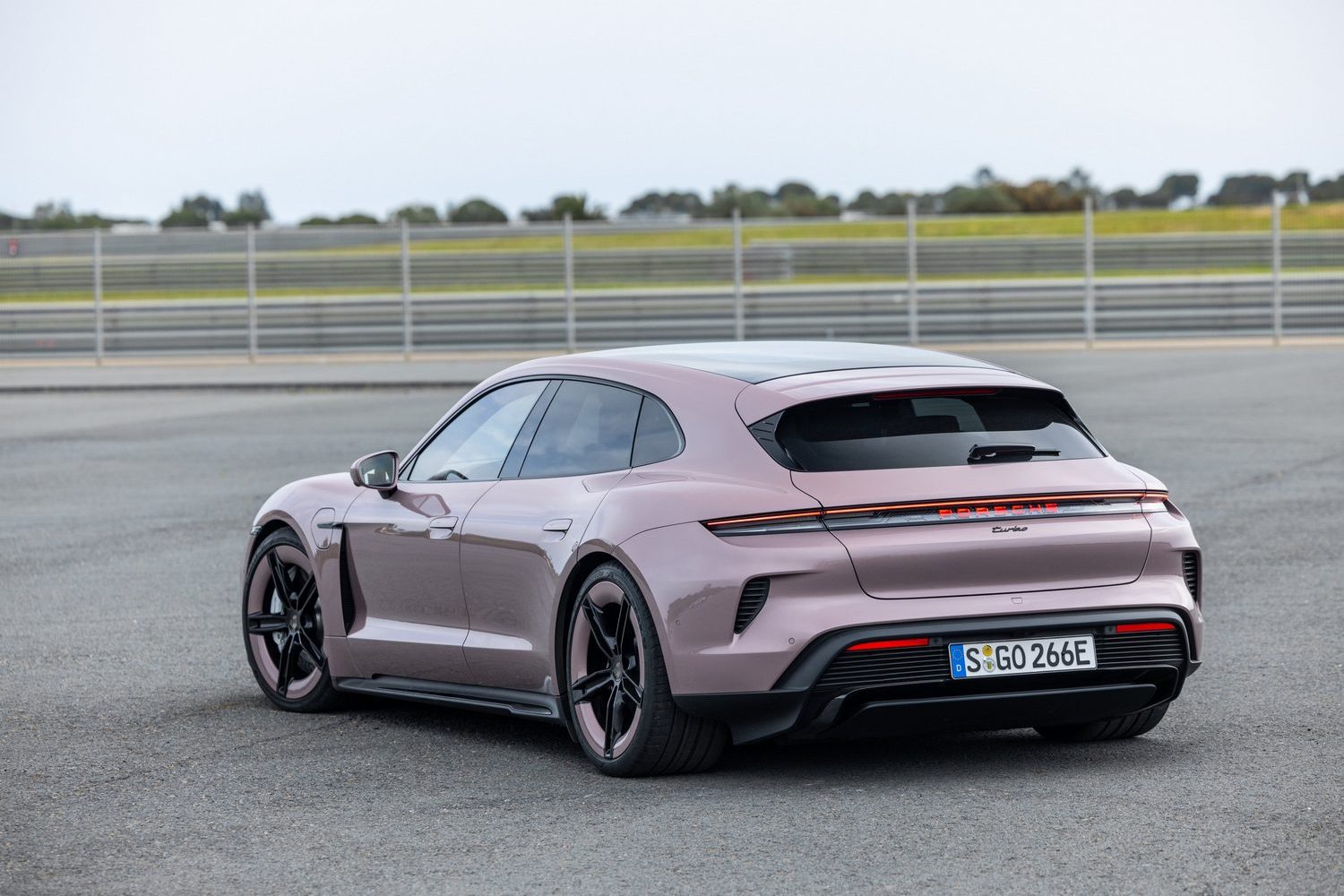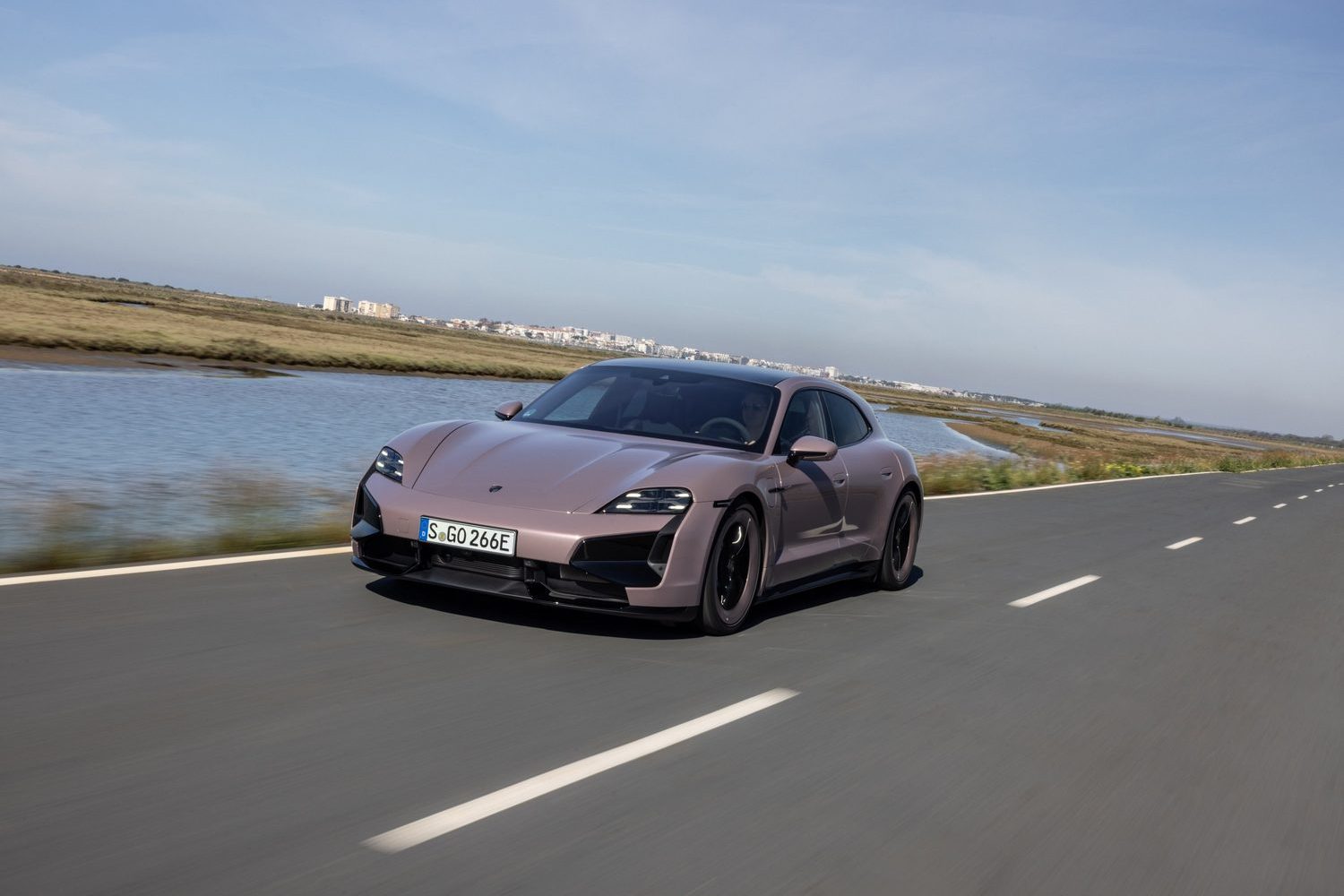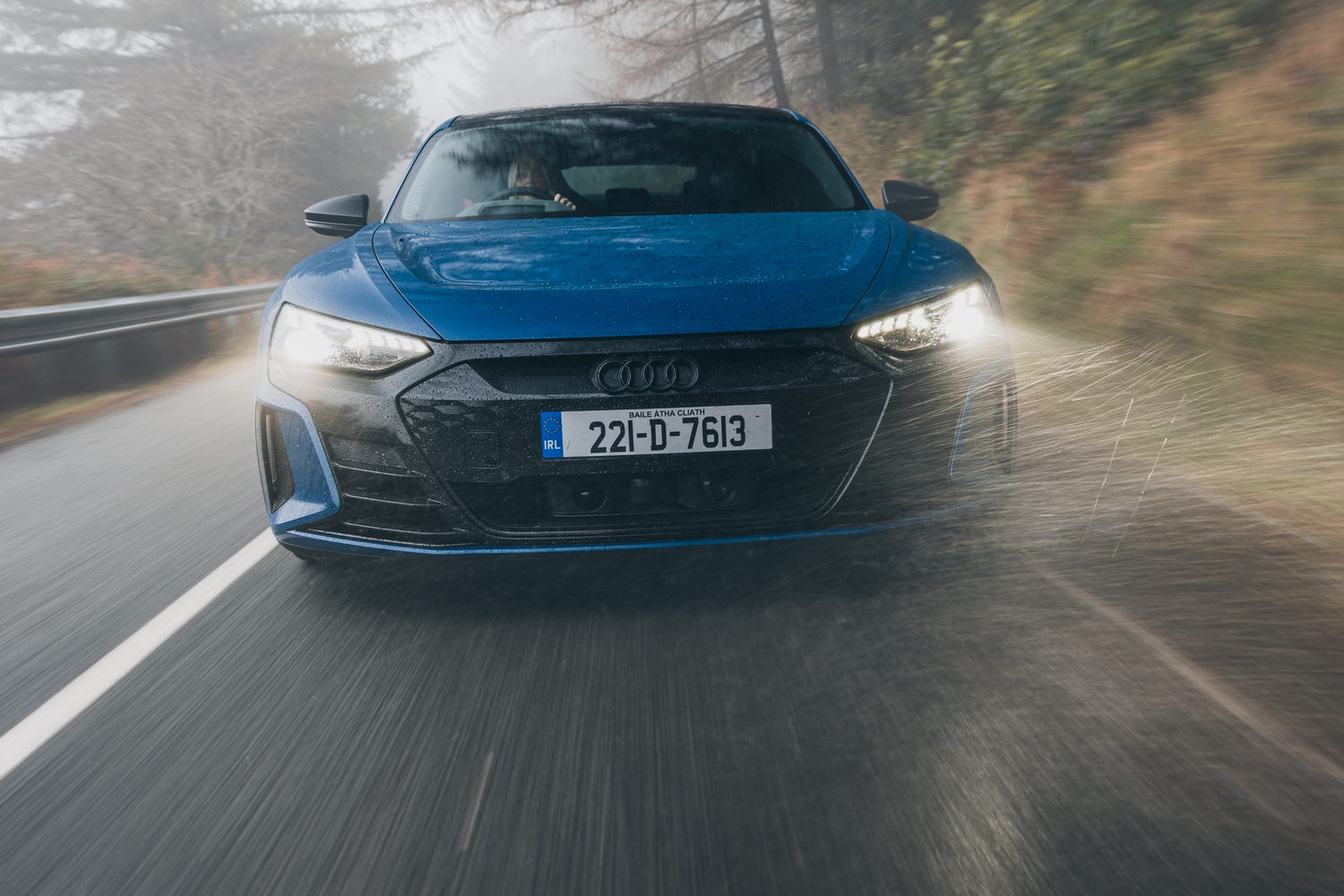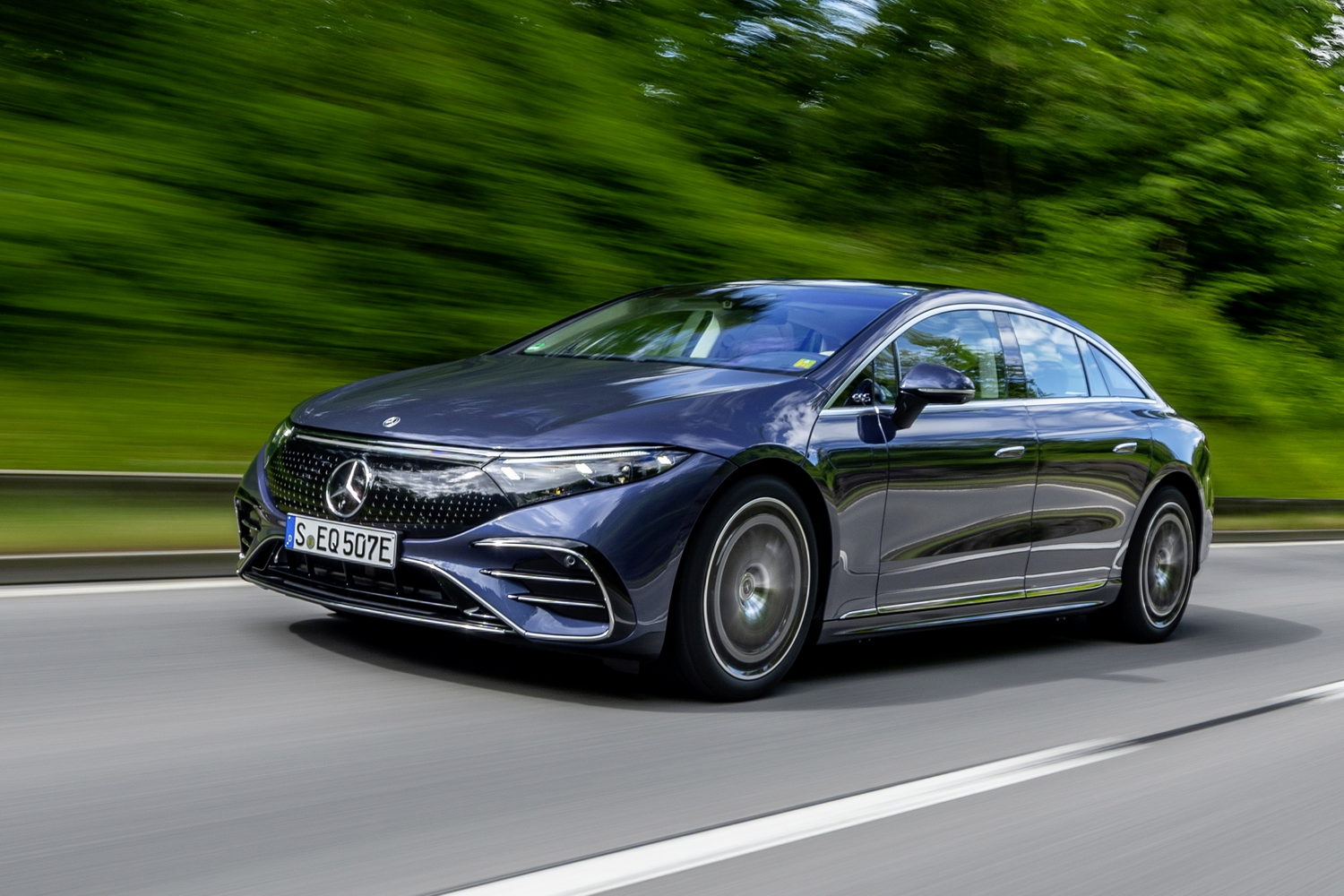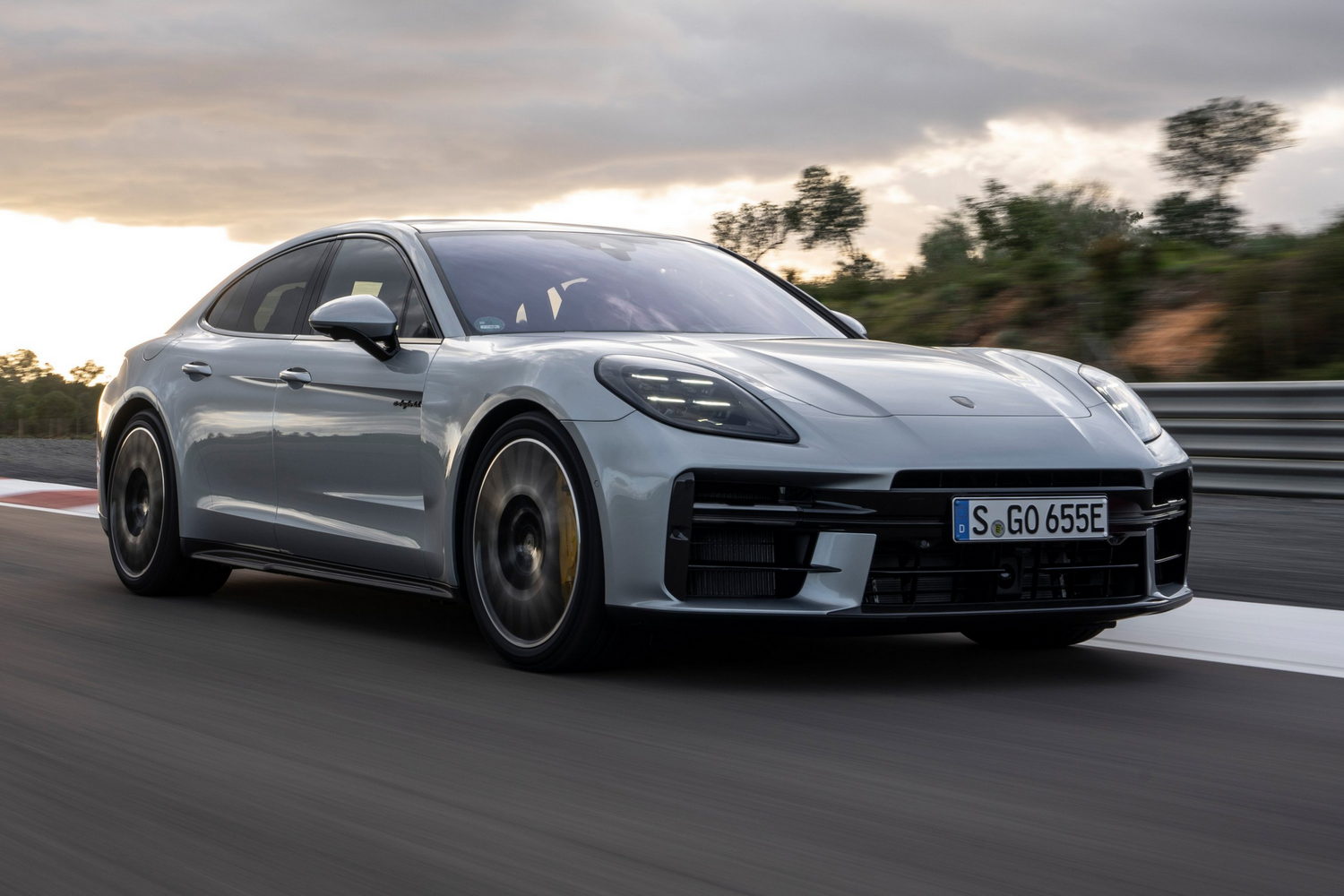When Porsche decided to launch its first dedicated electric model four years ago, it was generally accepted that it wasn't going to be a dud. And sure enough, the Porsche Taycan has proven a massive hit for the company setting a high bar for high-performance electric cars. Porsche offers a dizzying array of variants - currently, 14 Taycan disparate models are listed - and here we're testing the Taycan Turbo in Sport Turismo 'estate' guise.
In the metal
In typical mid-cycle update fashion, the visual changes to the 2024 Porsche Taycan are subtle but enough for fans and existing owners to spot the difference. A new front bumper design on the entry-grade Taycan and Taycan 4S models gives the impression of increased width due to the shape of the intakes below the reshaped headlights for a start. A sportier-looking bumper design is found on the Taycan Turbo upwards. The same treatment applies across the Sport Turismo and Cross Turismo body styles.
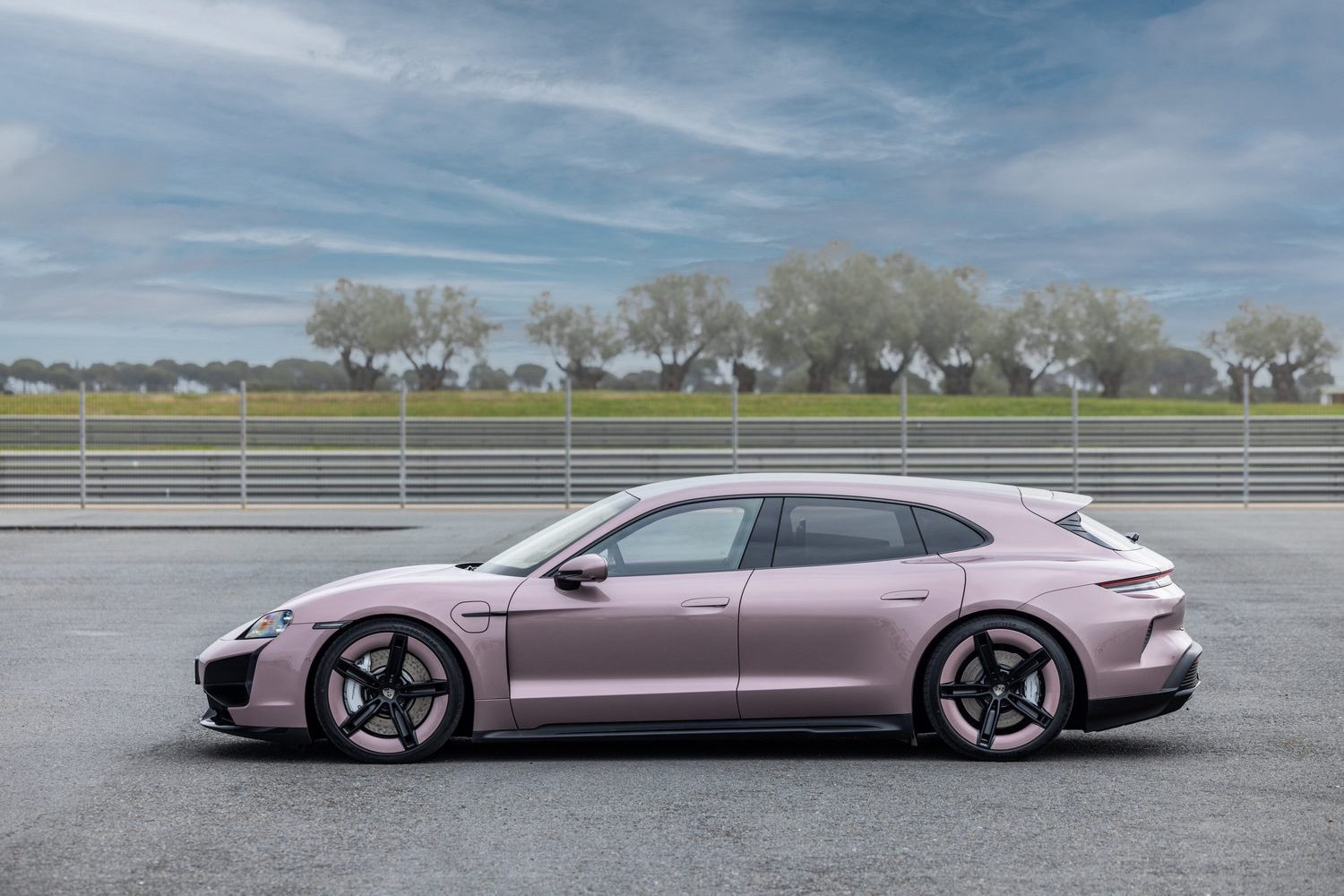
Turbo variants now have a specific 'Turbonite' colour for the crest on the bonnet, wheels, steering wheel and other surfaces. This dark grey colour also features throughout the interior on stitching and other accent areas, including the air vents.
At the rear, the Porsche badge sits behind a glass section that joins the rear lights. Buyers can specify having the wordmark illuminated in either black or 'glacier ice' blue, which includes greeting animations when approaching and leaving the car. On a practical level, Porsche has made its electrically operated charging ports on both front wings standard fit.
Other detail changes include technology upgrades. Matrix LED headlights are standard, featuring eleven segments that can be independently illuminated according to the driving situation, switching between high and low beams to not dazzle other road users. The optional HD matrix LED headlights provide a fresh take on the company's four-point lighting signature with a significant advancement in the hardware. With the outgoing matrix setup, there were 84 LED pixels used; now, each headlight unit uses more than 32,000 individually controllable micro-LEDs managed by a computer that can change the pattern every 16 milliseconds if necessary.
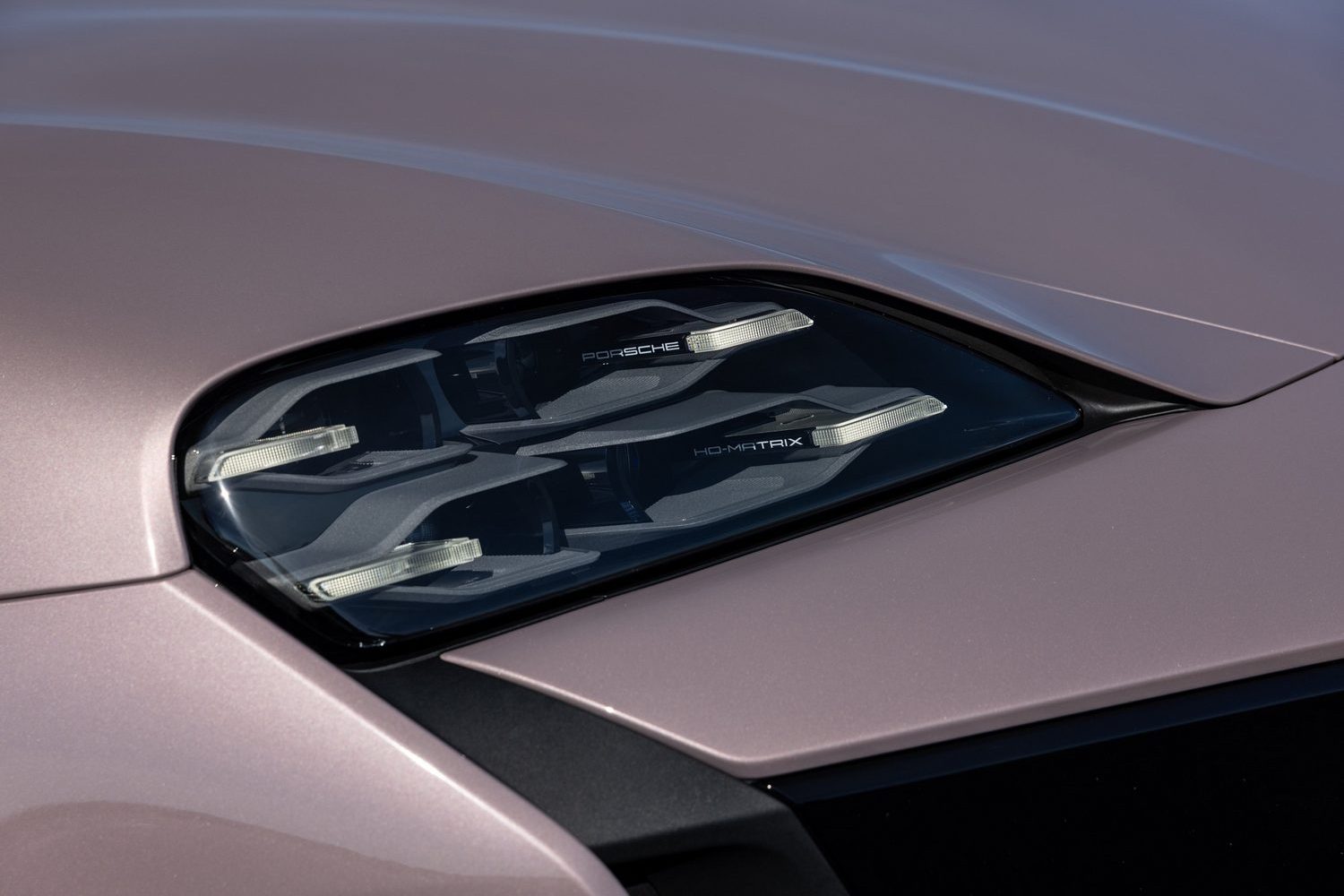
The Taycan's interior layout remains largely the same as before, save for some minor changes to the displays. The beautiful curved digital instrument screen remains one of the nicest of any car currently on sale. However, it looks slightly less impressive when paired with the €1,510 head-up display, which adds another layer on top.
In addition to the crisp graphics of the central touchscreen and the lower, angled touchscreen (to adjust functions such as the climate control and the Panoramic Roof with Variable Light Control - a €4,783 option), buyers can add another touchscreen in front of the passenger for an extra €1,291. This display lets them control the infotainment system and do additional things like watching a movie. A layer of privacy film means the driver can't see what is playing on the screen when the car is moving.
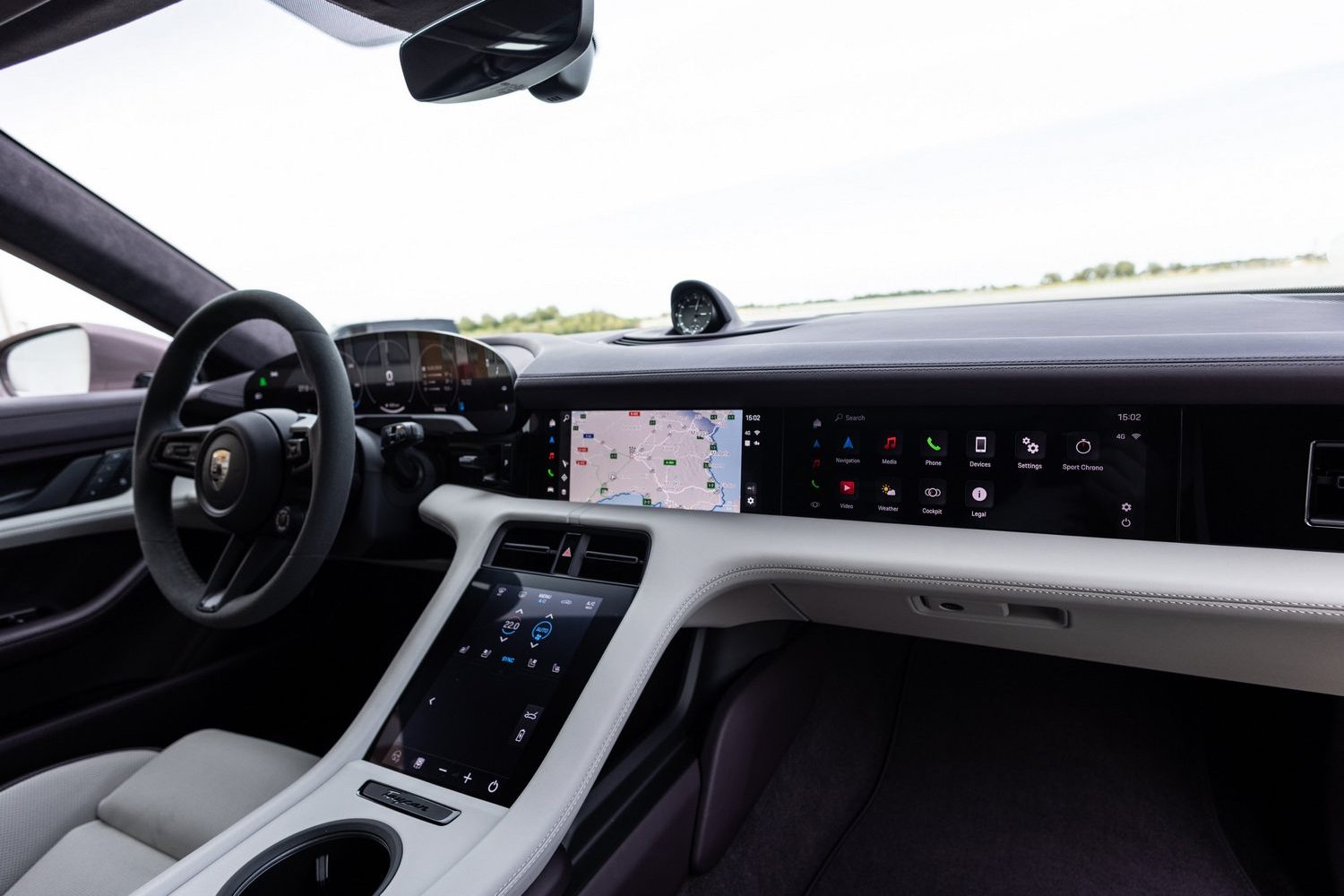
You can customise the interior to your liking if you have deep enough pockets, as items such as €317 aluminium pedals, €553 leather sun visors, and having the Porsche crest stamped on the centre console (for a mere €294) soon add up. Expensive options aside, the interior quality, both from material and construction standpoints, is right up there with the best that money can buy.
Some will choose the Sport Turismo body style because they prefer the look, but it also comes with enhanced luggage-carrying ability. With all seats in use the boot measures a reasonable 405 litres (compared to the Taycan saloon's 366 litres), and the opening is bigger to ease loading in larger items such as travel cases. Dropping the rear seats bumps the boot volume up to 1,171 litres and there's an additional 84 litres of stowage under the nose.
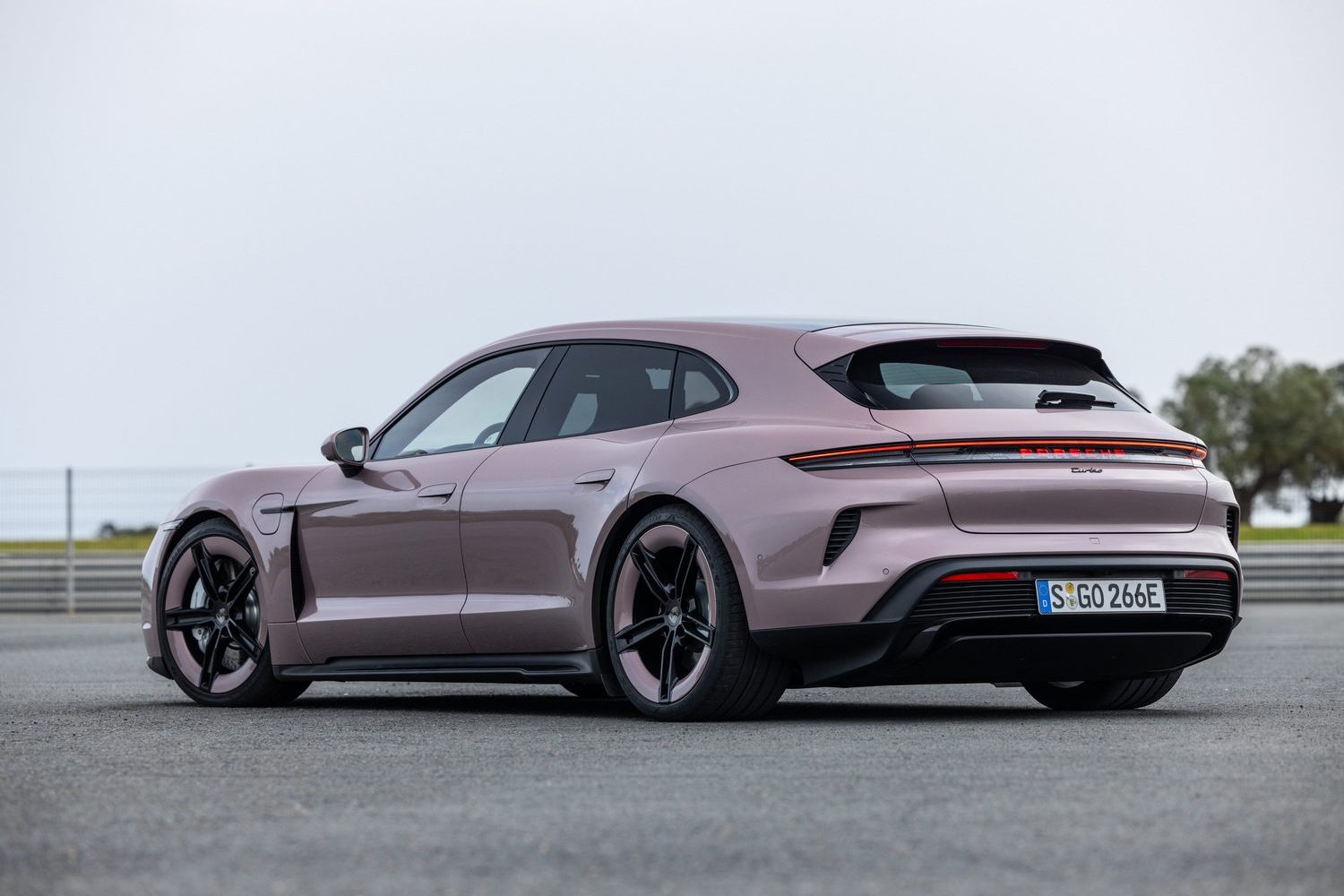
Driving it
Handling and performance weren't aspects of the Porsche Taycan that needed improving. Nonetheless, the engineers at Zuffenhausen have added numerous measures to enhance the overall driving experience of the electric car. The hardware changes are extensive and include the addition of Adaptive Air Suspension and Power Steering Plus as standard.
The optional Porsche Active Ride (PAR) suspension (a €7,663 option) was fitted to our test car. It uses two hydraulic pumps driven by a pair of electric motors powered directly from the high-voltage battery. This allows rapid ride height changes when required. This is demonstrated when you open the door, and the car quickly raises itself by 55 millimetres to allow for easier ingress or egress. After the door shuts, it gently lowers back to its standard height. It's a novelty at first but one that many owners will welcome.
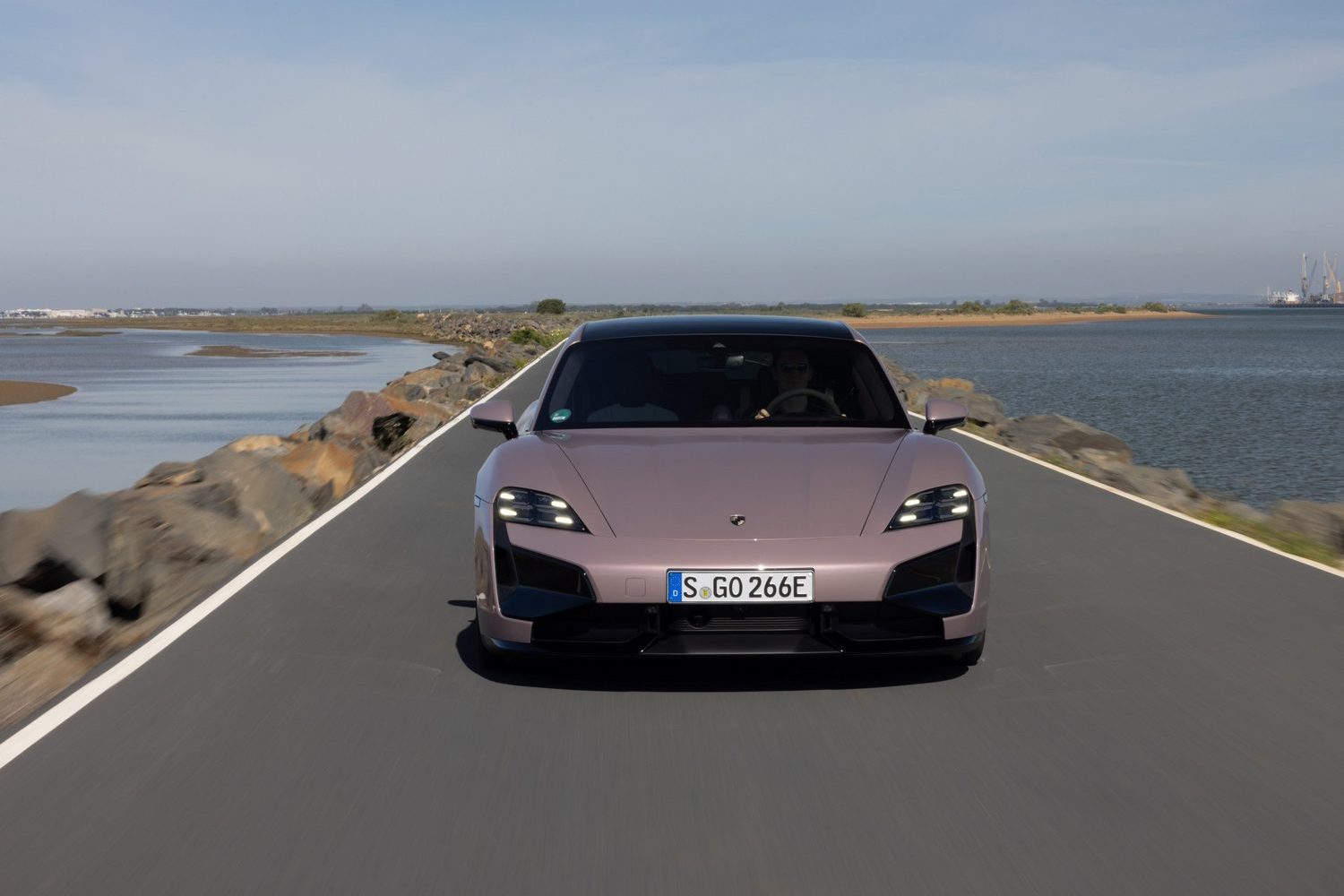
But the real benefit of the PAR system comes when driving. Depending on the chosen mode, the suspension effectively isolates the car's body from the suspension movement, enabling wheel travel independent of the cabin's occupants resulting in a serenely smooth ride over varying surface undulations. It can make even the poorest of road surfaces seem barely noticeable on the move. The way that it absorbs bigger impacts is nothing short of impressive. Sudden surface changes and things such as expansion joints that make you wince as you approach them at speed turn into little more than a distant thud.
Of course, Porsche isn't going all soft on us and turning the Taycan into some luxo-barge - there is a more dynamic aspect to how this suspension setup can work. Using the driving data and an array of sensors in the car, it can compensate for body movement during more enthusiastic driving, always maintaining an even keel by removing squat and dive under acceleration and braking. It's as impressive in action as it sounds and initially feels slightly surreal, but you soon become used to it.
For the keener driver, the appropriately named 'Helicopter Mode' dials the PAR into its most extreme setting. Rather than merely acting to eliminate the car's body movements, it actively adjusts the body to suit the corner, leaning into a bend in much the same way as a motorcycle rider would. During heavier braking, it pulls the rear of the car downwards. This motion feels very strange initially and goes against what your inner ear's balance is expecting to signal to your brain. As you step back on the power, the front will dip, and you slingshot forward, just as a helicopter does - hence the name.
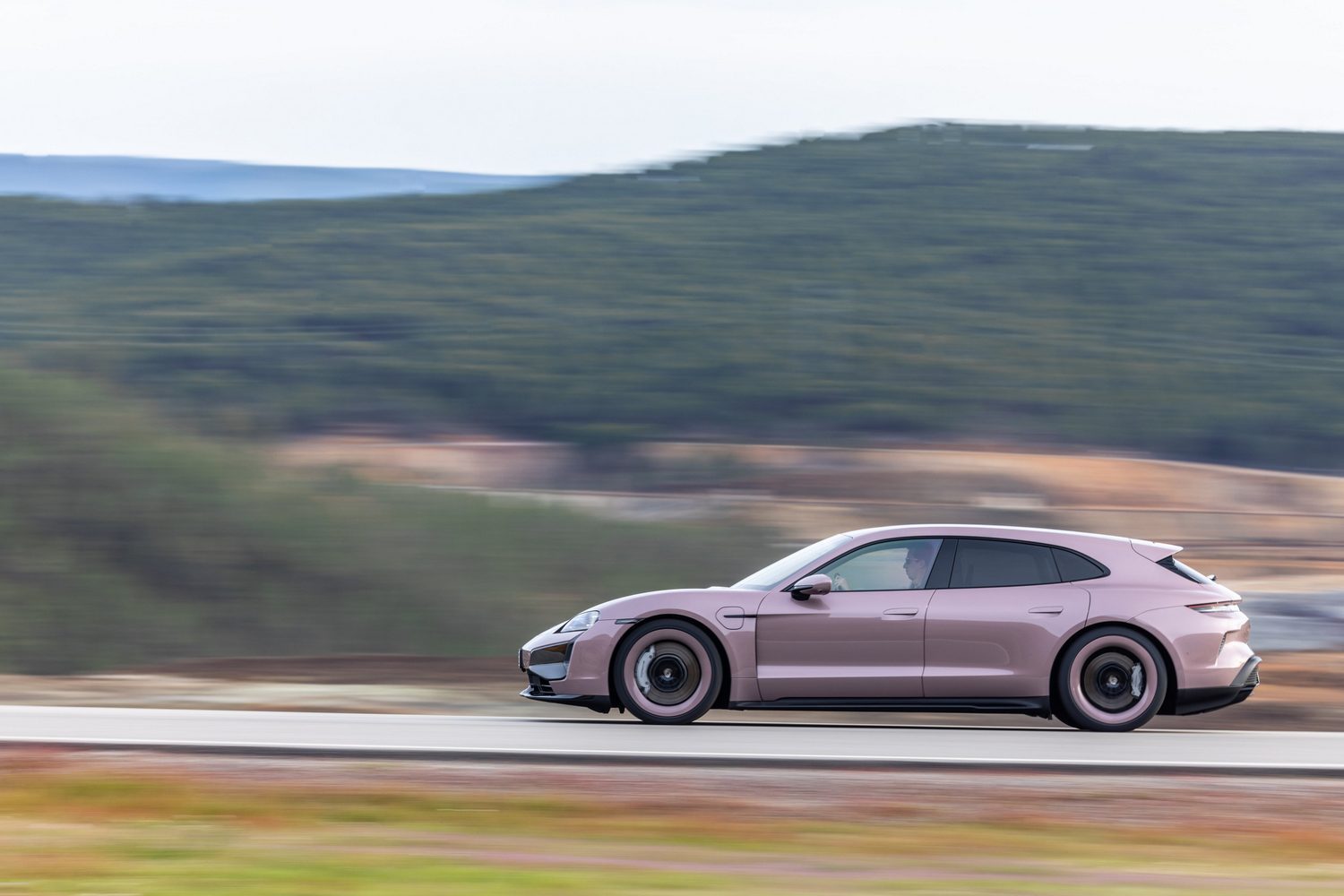
It all sounds a bit sci-fi, but it helps to exploit more of the available power - and there is much more of that in the updated Taycan Turbo Sport Turismo. The old car had 625hp as standard, bumping up to 680hp when the launch control was engaged. Thanks to new motor tech, the 2024 Turbo's output climbs to 707hp as standard and a headrest-testing 884hp with launch control active. Take a moment to digest those numbers and remind yourself that this isn't even the most powerful Taycan on sale.
That and the instantaneous delivery of 940Nm of torque will have you sailing past the 100km/h mark in just 2.7 seconds from rest. This five-door electric estate will trounce most hypercars launched in the last ten years. In reality, most will only do such acceleration runs a few times before the novelty wears off or you begin to feel nauseous. Still, the Porsche has such an abundance of power on tap that you always feel as if you're barely tickling its true potential in everyday driving. When you fully open the taps, the electric motors spool up at such a rate that you need less than a handful of seconds on the accelerator pedal to have the horizon hurtling towards you at an otherworldly rate.
Covering vast tracts of tarmac at lightning pace is one thing, but there's much more to how the Taycan Turbo drives than astonishing acceleration. Not only does the steering wheel feel nigh on close to perfect in your hands, but the experience and feedback it provides to the driver are second to none. It's difficult to pinpoint just how Porsche's chassis engineers make its cars steer with such unbridled brilliance, but whatever they're doing, it works. Even in the most mundane of driving scenarios, the Taycan Turbo has this delicacy in how the steering feels. Few others can match it, and when you find a more exciting ribbon of tarmac, it nails every apex and goes precisely where you want it to.
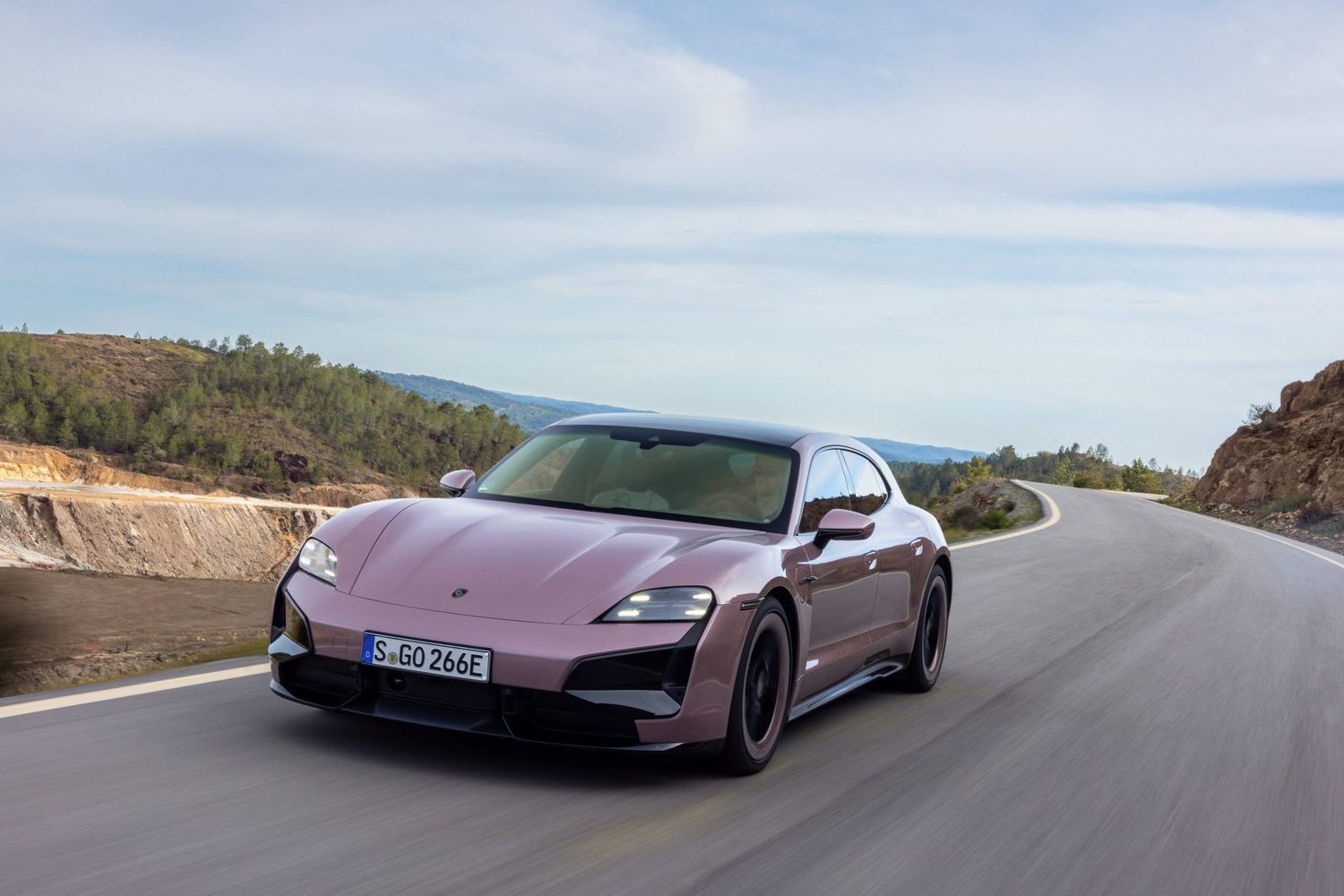
When you lift off the power, the battery gets a bigger dollop of energy back into it than before thanks to increased energy recuperation. Previously, the Taycan could use up to 290kW when slowing from higher speeds. That has increased to 400kW, with a 15 per cent increase at lower speeds, too. This enhances the car's overall efficiency.
Every bit as impressive as the on-road performance update is the step forward Porsche has made with its battery and range in the Taycan Turbo Sport Turismo. The battery's energy capacity has been increased from 93.4kWh to 97kWh, and with efficiency gains throughout the car, the WLTP range has been increased from 452 kilometres to as much as 606 kilometres in this version. In other models, the range gain is as much as 175 kilometres. Charging has also come in for an overhaul, with a peak DC-charging rate of 320kW and better stability enabling it to sustain more than 300kW of charging for up to five minutes. The result is that, in optimum conditions, the charging time to go from 10 to 80 per cent reduces to just 18 minutes.
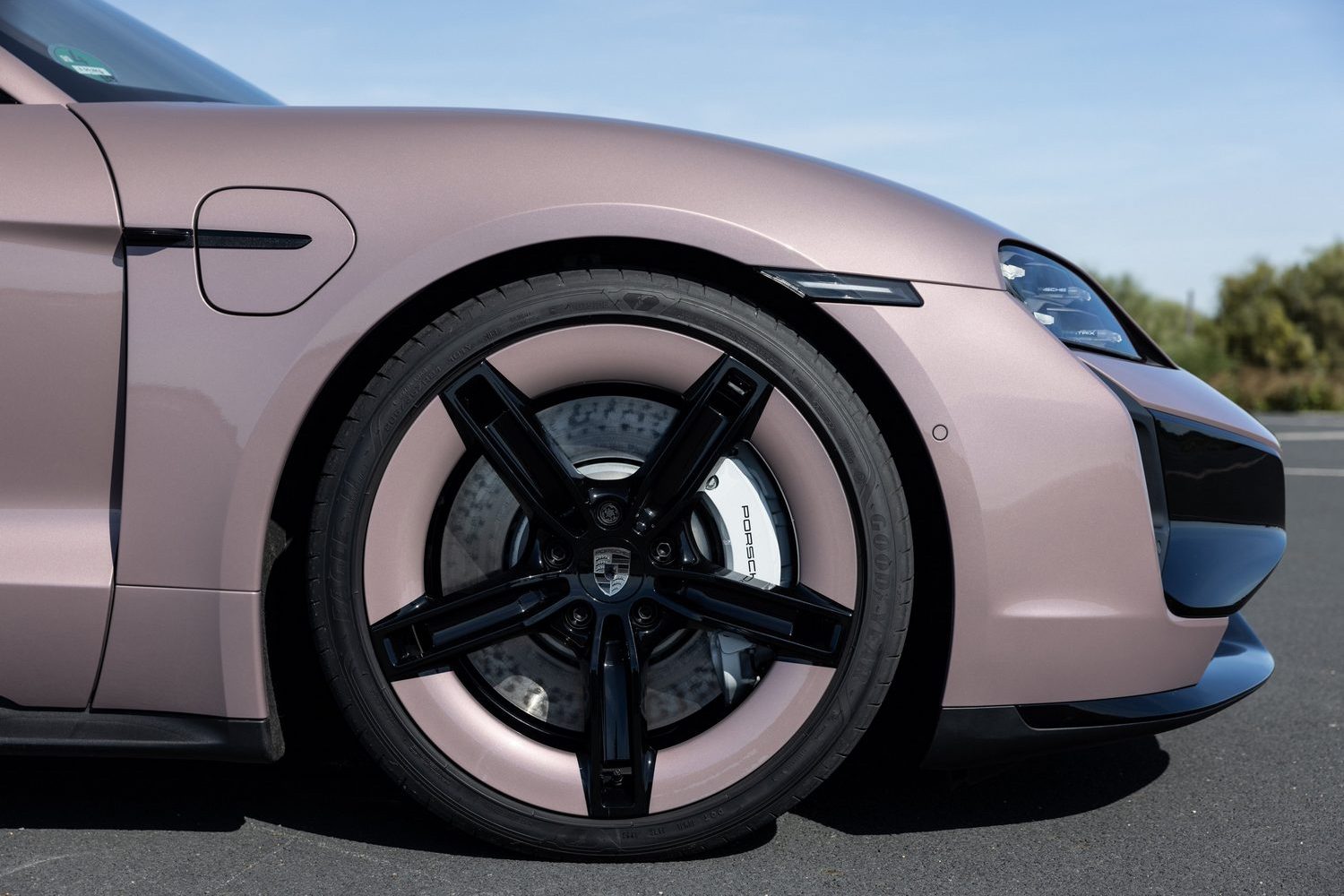
What you get for your money
Even a base Porsche Taycan Sport Turismo is an expensive car, with prices starting at €111,519, and that's before you start ticking option boxes, of which there are many. The Taycan Turbo Sport Turismo has a starting price of €192,576, and you get some additional equipment for that. This version has a unique bumper design and rides on 21-inch wheels. With the updated model come more standard items including a heat pump, electric charge port covers on either wing, air suspension, Power Steering Plus, HD matrix LED headlights, Porsche Surface Coated Brakes (PSCB) with white calipers and Sport Chrono Package with Push-to-Pass. There is a whole lot more that also comes as standard, but such is the level of personalisation available, it's worth getting onto the online configurator and seeing for yourself.
Summary
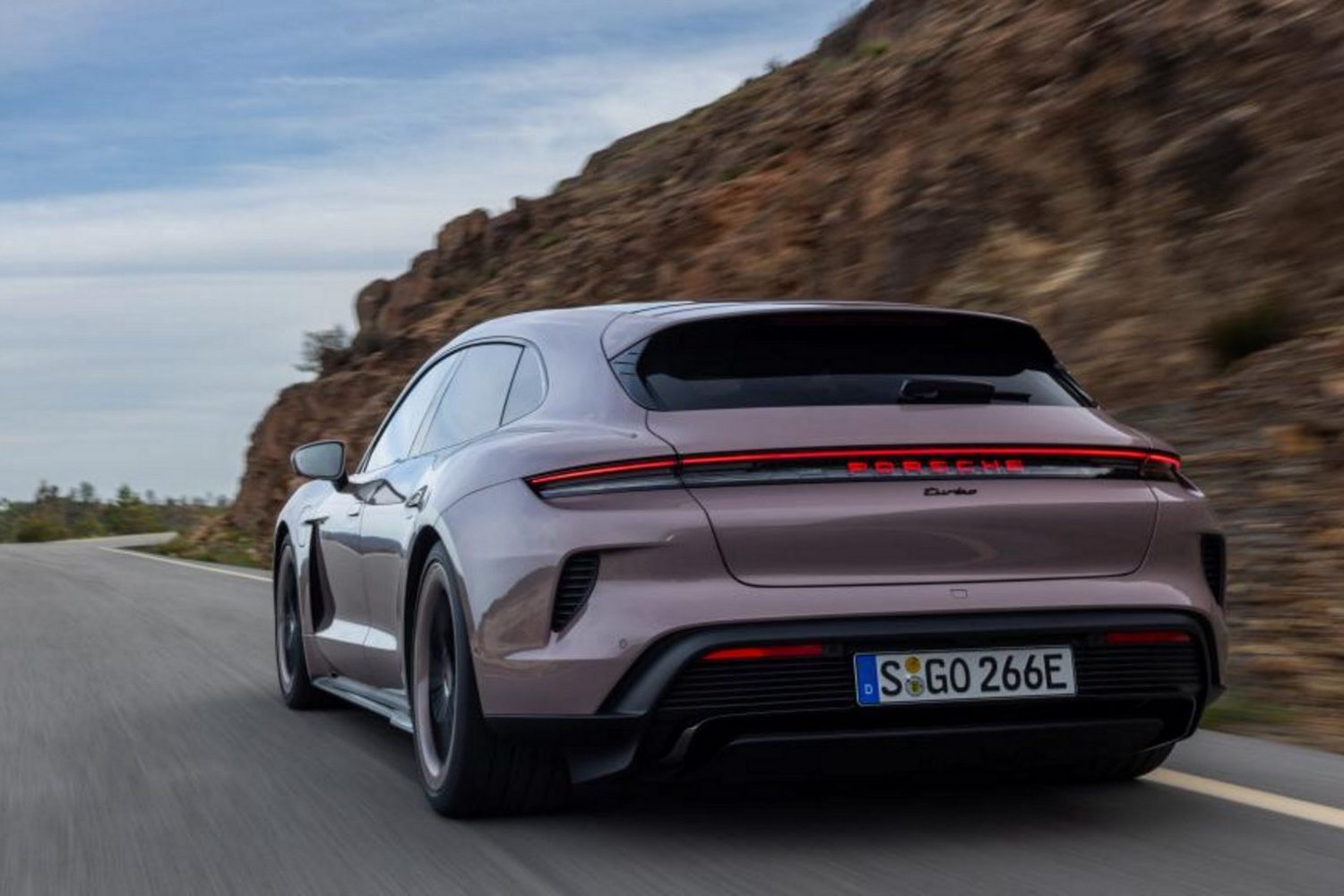
The Porsche Taycan Turbo Sport Turismo is much more than an electric estate. Performance upgrades give it supercar-beating performance while the increase in standard equipment, combined with its premium interior and attention to detail, make it every bit as appealing as some more expensive luxury cars. Finally, improvements to the battery and overall efficiency mark this out as a proper long-range electric car that is truly desirable.

